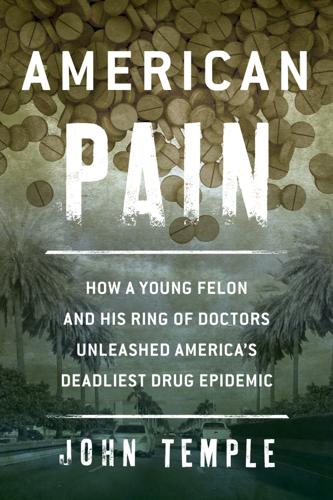
American Pain: How a Young Felon and His Ring of Doctors Unleashed America’s Deadliest Drug Epidemic
by
John Temple
Published 28 Sep 2015
Instead, there was a name she’d never seen before, a name she didn’t know how to pronounce: Dr. Cynthia Cadet. There were three bottles. One contained alprazolam, and two contained oxycodone, two different dosages, 15 milligrams and 30 milligrams. Oxycodone. Alice had heard of oxycodone. She believed it was some kind of cancer drug. The alprazolam and the 15-milligram oxycodone had been filled at a place called America’s Pharmacy. The 30-milligram oxycodone was from a place called Speedy Scripts II. The addresses were Fort Lauderdale. Florida. They went through the garbage bag Stacy had brought home. Mostly clothes, but also some papers.
…
Between July 2008* and the raid, the doctors of South Florida Pain and American Pain wrote 66,871 prescriptions for various medications. Ninety-six percent of the prescriptions were for oxycodone or alprazolam. More than 80 percent of the patients were from out of state.* The five American Pain doctors under investigation wrote prescriptions for fourteen million oxycodone pills. Executive Pain’s six doctors wrote for almost four million oxycodone pills. Boshers was the biggest writer, personally responsible for prescribing 3,601,860 oxycodone 30-milligram pills. Altogether, doctors targeted at both clinics had prescribed enough oxycodone to have given every man, woman, and child in Florida a pill. Then there was the wiretap.
…
Turner had first heard about rogue pain clinics a year earlier. Back then, she knew next to nothing about painkillers and addiction. Since then, she’d witnessed the destructive power of oxycodone, and it awed her. To understand oxycodone, imagine everything that makes a man or woman feel good, all the preoccupations and pastimes we are programmed to enjoy. Sex, love, food. Money, power, health. Synthesize all of that pleasure-kindling potency, and multiply by ten. Then cram it all into a pebble-sized blue pill. That’s oxycodone—one of the most irresistible opioid narcotics ever cooked up in the six-thousand-year history of dope. Crush and snort a 30-milligram pill, known as an oxy 30, and feel the euphoria bloom in your limbs, the ecstatic warmth settle in the depths of your belly.
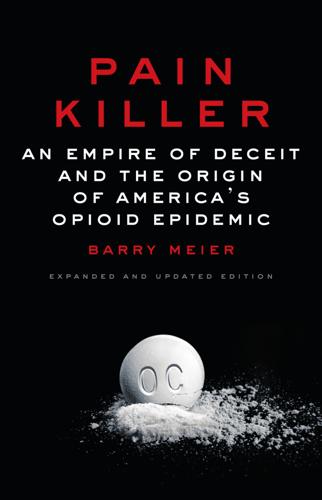
Pain Killer: An Empire of Deceit and the Origins of America’s Opioid Epidemic
by
Barry Meier
Published 29 Oct 2020
For decades, some patients and drug abusers had misused popular painkillers sold under names such as Percocet, Percodan, and Tylox. The active ingredient in those drugs is a narcotic called oxycodone, and each pill typically contained 5 milligrams of oxycodone mixed with 500 milligrams of an over-the-counter pain reliever such as aspirin or acetaminophen. OxyContin was very different. It was pure oxycodone, and the weakest dosage contained 10 milligrams of the narcotic, twice as much as in its predecessors. It was also available in much higher dosages, including 20, 40, 80, and 160 milligrams of oxycodone. In terms of pure narcotic firepower, OxyContin was a nuclear weapon. The drug was first marketed in 1996 by a little-known Connecticut company named Purdue Pharma.
…
This data reports that during 1999 and part of 2000, there were 12 overdose deaths in which oxycodone was identified. Oxycodone was the sole chemical identified in only two cases, one of which was a suicide. • As of this writing, we have only been able to obtain data from one county in Pennsylvania, Blair….In this county, which encompasses Altoona, during the period from January 13, 1996 to December 1, 2000, there were 58 reported “Drug Deaths.” Of these deaths, seven involved oxycodone as one of the agents causing death due to multiple drug toxicity. In no case was oxycodone listed as a single cause of death. We have no information at this point as to whether any of these deaths involved OxyContin
…
The company stated: A controlled-release formulation of oxycodone may have less abuse potential than drugs such as Percodan for several reasons. First, most illicit drug abusers prefer a drug that is rapidly acting. The controlled-release formulation will have a longer acting effect without producing an immediate euphoria. In addition, the tablet formulation of the controlled-release oxycodone will be more difficult to dissolve in a solution, hence not desired by the “street” addict, who prefers an injectable solution. Second, the controlled-release formulation of oxycodone will not be targeted for patients who might otherwise be treated with codeine [a painkiller with less abuse potential than oxycodone] as has been the case [by some makers of oxycodone-containing drugs like Percodan] in the past.
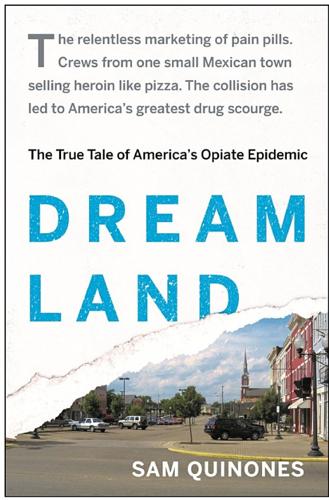
Dreamland: The True Tale of America's Opiate Epidemic
by
Sam Quinones
Published 20 Apr 2015
Despite its ad claims, Purdue provided no study to the FDA, investigators later noted, that supported those claims. The company taught its sales force that oxycodone was harder to extract, and thus abuse, than other drugs—though the company’s own studies showed that wasn’t true. In 1995 tests, the company found that 68 percent of the oxycodone could be extracted when the pill was crushed and liquefied and drawn through cotton into a syringe. In fact, addicts I spoke with said it was easier to extract the drug from an OxyContin pill than from other, milder opiate painkillers, such as Vicodin or Lortab, because OxyContin didn’t include anything but oxycodone, while the others also contained acetaminophen or Tylenol.
…
By 2001, using modern advertising and RAP’s rabble on the streets, the black tar heroin overdose deaths that began when the Xalisco Boys came to town had fallen by more than a third. And for a while, with nothing else priming the market, those overdoses stayed down. Purdue OxyContin is a simple pill. It contains only one drug: oxycodone, a painkiller that Germans synthesized in 1916 from thebaine, an opium derivative. Molecularly, oxycodone is similar to heroin. OxyContin riffed off an earlier Purdue product: MS Contin. MS Contin was Purdue’s first foray into pain management using the Continus timed-release formula invented by Napp in England. MS Contin sent morphine into a patient’s bloodstream continuously—hence Contin—over several hours.
…
Wright later left the FDA to work for Purdue. In 1995, the FDA approved OxyContin for 10, 20, and 40 mg pills. Later, it added 80 and 160 mg pills. Despite the high doses of oxycodone loaded into each pill, the FDA bought the idea that by creating fewer surges of euphoria and depression OxyContin would be less addictive—the Holy Grail, at last. The FDA approved a unique warning label for OxyContin. It allowed Purdue to claim that OxyContin had a lower potential for abuse than other oxycodone products because its timed-release formula allowed for a delay in absorbing the drug. “No other manufacturer of a Schedule II narcotic ever got the go-ahead from the FDA to make such a claim,” Meier wrote.
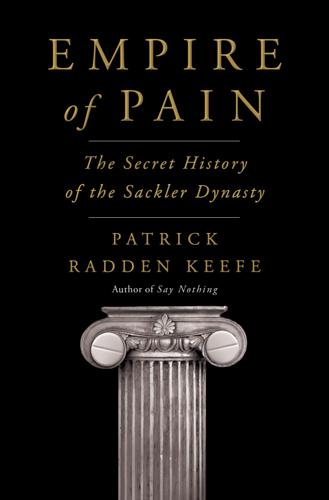
Empire of Pain: The Secret History of the Sackler Dynasty
by
Patrick Radden Keefe
Published 12 Apr 2021
At meetings, they would constantly discuss the possibilities, and Richard would throw out various ideas. Over dinner that night, Kathe suggested using oxycodone, an opioid that had been synthesized in Germany in 1917. According to Kathe, Richard did not know what oxycodone was. So she told him: it was another opioid, a chemical cousin of morphine—and also of heroin. But oxycodone was much more potent than morphine. The drug was already widely available as a painkiller, in mild treatments like Percodan and Percocet. But there was only a small amount of oxycodone in those pills, because in Percodan it was mixed with aspirin and in Percocet it was mixed with acetaminophen, both of which can be toxic if a person takes too much of them.
…
Now, in internal discussions at Purdue headquarters in Norwalk, Richard and his colleagues entertained the notion of a similar marketing strategy. In truth, oxycodone wasn’t weaker than morphine, either. In fact it was roughly twice as potent. The marketing specialists at Purdue didn’t know why, exactly, doctors had this misapprehension about its being weaker, but it might have been because for most physicians their chief exposure to oxycodone involved the drugs Percocet and Percodan, in which a small dose of oxycodone was combined with acetaminophen or aspirin. Whatever the reason, Richard and his senior executives now devised a cunning strategy, which they outlined in a series of emails. If the true personality of oxycodone was misunderstood by America’s doctors, the company would not correct that misunderstanding.
…
In an impressively credentialed, apparently independent clinical setting, these pain specialists were validating the commercial research and development that Richard and his colleagues were doing at Purdue. “Until last week, our belief that oxycodone in high dose might be a satisfactory alternate to high-dose morphine was supposition,” Richard informed colleagues, excitedly, one day in 1991, when the company was in the early phases of developing OxyContin. “As recent as this past July, Dr. Kathleen Foley told me that ‘The idea is very promising, but whether one can use oxycodone in high doses for cancer pain is not known because nobody has ever used it.’ ” But Foley had been working with oxycodone liquid, administering it in large doses to patients, Richard explained, and “it has performed excellently,” with “no unexpected side effects.”
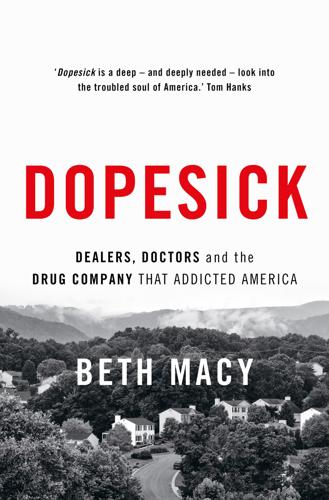
Dopesick: Dealers, Doctors and the Drug Company That Addicted America
by
Beth Macy
Published 4 Mar 2019
With annual sales of $170 million, MS Contin had run its profit-making course by the mid-1990s. As its patent was set to expire, the company launched OxyContin to fill the void, with the intention of marketing the new drug, a reformulation of the painkiller oxycodone, beyond hospice and end-of-life care. It was a tweak of a compound first developed in 1917, a form of oxycodone synthesized from thebaine, an ingredient in the Persian poppy. Famously private, the brothers were better known for their philanthropy than for their drug-developing prowess, counting among their friends British royalty, Nobel Prize winners, and executives of the many Sackler-named art wings from the Smithsonian to the Metropolitan Museum of Art.
…
After an X-ray and an exam to rule out a break, the doctor wrote her fifteen-year-old a prescription for a twenty-five-day supply of oxycodone. “I tore it up,” Janine said. She also called clinic official Dr. John Burton, who said of the incident: “This was a provider who was still doing things the way we used to do them five years ago, and he didn’t get the memo.” A come-to-Jesus ensued, with Burton reminding the doctor of the hospital system’s ER policy of no more than three days’ worth of oxycodone or hydrocodone per prescription, sans refills. During the Q&A at the end, Patricia stood in the audience and described Tess’s descent from Cave Spring honor-roll student and athlete to heroin addict and prostitute, preyed on by a growing network of drug dealers and pimps.
…
The informant had more specifics: Users had already figured out an end run around the pill’s time-release mechanism, a coating stamped with oc and the milligram dosage. They simply popped a tablet in their mouths for a minute or two, until the rubberized coating melted away, then rubbed it off on their shirts. Forty-milligram Oxys left an orange sheen on their shirtsleeves, the 80-milligrams a tinge of green. The remaining tiny pearl of pure oxycodone could be crushed, then snorted or mixed with water and injected. The euphoria was immediate and intense, with a purity similar to that of heroin. Stallard wondered what was coming next. In the early nineties, Colombian cartels had increased the potency of the heroin they were selling in urban markets to increase their market share—the goal being to attract needle-phobic users who preferred snorting over injecting.
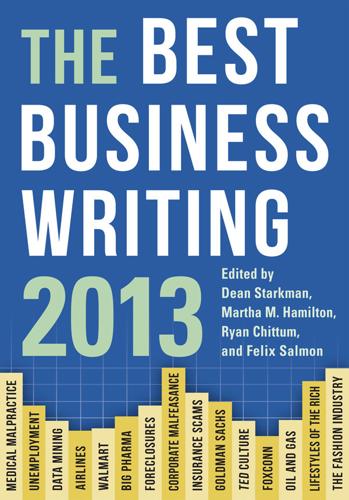
The Best Business Writing 2013
by
Dean Starkman
Published 1 Jan 2013
She returned to Doctors Rx Us, where Dr. Smith wrote a prescription for ninety tablets of 30 mg oxycodone, according to prescription records. It would be her last. The next day, Ms. Kinkade filled the prescription at a Walgreens in Beverly Hills, Fla. The oxycodone would have come from Walgreen’s Jupiter, Fla., distribution center, a company spokesman said. On September 14, the DEA barred that facility from selling controlled substances, alleging that it failed to maintain effective controls to stop large amounts of oxycodone from reaching the black market. “When [companies] choose to look the other way, patients suffer and drug dealers prosper,” Mark Trouville, the DEA special agent in charge, said at the time.
…
On September 12, the Drug Enforcement Administration revoked the licenses of two Florida CVS stores, which it claims sold excessive amounts of oxycodone without ensuring the pills weren’t diverted to the black market. CVS is fighting the DEA’s order in administrative and federal courts. Two days later, the agency served Walgreen with a suspension order halting sales of controlled substances from its Jupiter, Fla., distribution center, calling it an “imminent threat to public safety.” The DEA’s regulatory action alleges that the facility—the state’s largest oxycodone distributor—“failed to maintain effective controls” of its narcotic painkillers. Walgreen said it is working with regulators and has tightened its procedures.
…
The drugs that killed her didn’t come from the Colombian jungles or an Afghan poppy field. Two of the three drugs found in her system were sold to Ms. Kinkade, legally, at Walgreen Co. and CVS Caremark shops, the two biggest U.S. pharmacies. Both prescription drugs found in her body were made in the United States—the oxycodone in Elizabeth, N.J., by a company being acquired by generic-drug giant Watson Pharmaceuticals Inc., and the methadone in Hobart, N.Y., by Covidien Ltd., another major manufacturer. Every stage of their distribution was government-regulated. In addition, Ms. Kinkade had small amounts of methamphetamine in her system when she died.
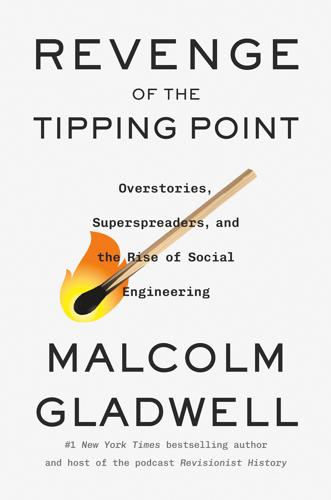
Revenge of the Tipping Point: Overstories, Superspreaders, and the Rise of Social Engineering
by
Malcolm Gladwell
Published 1 Oct 2024
His concoction ended up being called heroin, and for a time it was heralded as the great safe alternative to morphine. And then in 1916, two German chemists took a similar alkaloid to codeine named thebaine, resynthesized it, and came up with something they called oxycodone. Oxycodone never gained the notoriety of its cousins heroin and morphine—until eighty years after its discovery, that is, when it was reimagined by a company named Purdue Pharma. Purdue packaged oxycodone in a high-dose extended-release tablet. The company marketed its invention around the world with more enthusiasm and audacity than anyone had ever marketed a painkiller before, calling its creation OxyContin.
…
MS Contin was used primarily by late-stage cancer patients, in hospices and back at home. It was a good business, but a small one. The Sackler family, which ran Purdue, had grander ambitions. They switched their focus to oxycodone. Typically, oxycodone had been combined with acetaminophen or aspirin. That’s what Percocet and Percodan are, respectively, and that combination made oxycodone harder to abuse, because if you consume too much acetaminophen, you will do serious damage to your liver. Some researchers call this a “governor’s switch.” (It’s why the opioid diphenoxylate—which is commonly used to treat diarrhea—is always combined with atropine, which is poisonous in high doses: Try to get high on diphenoxylate and you’ll pay the price.)
…
(It’s why the opioid diphenoxylate—which is commonly used to treat diarrhea—is always combined with atropine, which is poisonous in high doses: Try to get high on diphenoxylate and you’ll pay the price.) Purdue’s first innovation was to remove the acetaminophen governor’s switch from oxycodone. Purdue then raised the drug’s dosage. Percocet and Percodan each have 5 milligrams of oxycodone. Purdue decided that its lowest dose pill would have twice that amount. Then Purdue created a special extended-release tablet, which meant that instead of having to swallow a pill every few hours and ride the ups and downs that come with taking an opioid, a patient could be soothed with an even, steady dose over an entire day.
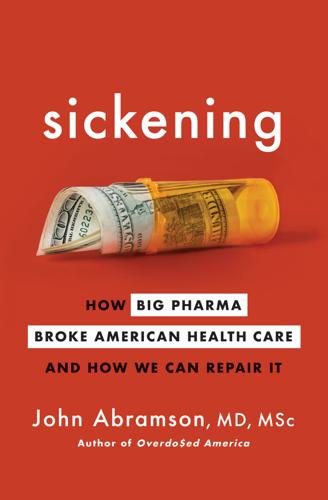
Sickening: How Big Pharma Broke American Health Care and How We Can Repair It
by
John Abramson
Published 15 Dec 2022
In 1996 — the year its patent on MS Contin expired — Purdue transferred its marketing efforts from morphine to another opiate: semi-synthetic oxycodone, which had been developed in Germany back in 1916. Purdue’s marketing of its new long-acting formulation of oxycodone, brand name OxyContin, claimed several advantages (or created a false impression of these advantages, which it left uncorrected) over other oral narcotics: that oxycodone was a less powerful narcotic than morphine and could therefore be safely used to treat non-cancer-related chronic pain; that using a wax matrix to control the release of oxycodone from OxyContin tablets slowed systemic absorption of the active drug, which greatly decreased the risk of abuse, addiction, and withdrawal symptoms; and that OxyContin would provide round-the-clock pain relief when given just twice daily.
…
And Purdue led the list. By 2001, OxyContin had become the most frequently prescribed brand-name narcotic in the United States, with annual sales reaching $1 billion. This was a remarkable marketing feat, given that the three claims Purdue had made about the advantages of OxyContin were not true. In the first place, oxycodone is not weaker than morphine; it is actually twice as strong. Second, Purdue had not done any studies to support its claim that the controlled-release formulation of OxyContin using a wax matrix made it less likely than other narcotics to lead to addiction. Notwithstanding this lack of evidence, the FDA allowed the following unsubstantiated claim to be included in the label for OxyContin: “Delayed absorption, as provided by OxyContin tablets, is believed to reduce the abuse liability of a drug.”
…
The company had several reasons to be untruthful about the duration of pain relief: insurers balked at filling prescriptions for OxyContin for more frequent than twice-daily dosing, arguing that far less expensive shorter-acting medications could be used instead; doctors found the simplicity of twice-a-day dosing an advantage; and unlike many other drugs, OxyContin pills were priced in proportion to the dose of the active ingredient, oxycodone, incentivizing drug reps to recommend that doctors increase the dose rather than the frequency of OxyContin. This strategy may have been designed to maximize OxyContin sales, but, according to Theodore J. Cicero, neuropharmacologist at the Washington University School of Medicine in St. Louis, it was a “perfect recipe for addiction.”
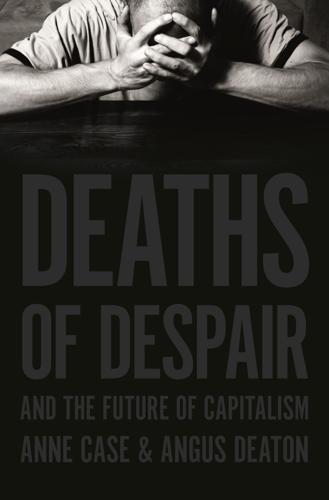
Deaths of Despair and the Future of Capitalism
by
Anne Case
and
Angus Deaton
Published 17 Mar 2020
Heroin is an opioid; it was synthesized in 1874 and cannot be legally used in the US, though it is used in medicine in several other countries. The strength of an opioid is measured by comparing it with morphine. A milligram of heroin is equivalent to three milligrams of morphine (or opium), so its morphine milligram equivalent (MME) is 3. One of the most important opioids in the current epidemic is oxycodone (MME 1.5), which is sold in an extended-release form as OxyContin, manufactured by Purdue Pharmaceutical. OxyContin, known on the street by many names, including “hillbilly heroin,” was approved by the Food and Drug Administration (FDA) in 1995. Another is hydrocodone (MME 1), which is in Vicodin.
…
In 2000, between a third and a half of all accidental overdoses involved (mostly prescription) opioids, with the exact count dependent on how we attribute deaths from “unspecified” narcotics. Heroin, a long-standing scourge, was recorded as present in 1,999 deaths that year. Before 2011, the increases in deaths were powered by prescription opioids, particularly those based on hydrocodone (Vicodin) and oxycodone (Percocet, OxyContin). In 2011, Purdue Pharmaceutical reformulated OxyContin to make it resistant to abuse. The original formulation had warnings against taking it other than as directed, but those warnings, by telling you exactly what not to do, were easily reversed to give accurate instructions for how to convert the extended-release pill into one giving an immediate high, or to prepare it for injection.22 Deaths from prescription opioids stopped rising in 2011, almost certainly in response to the reformulation, though the increasing awareness of physicians of their part in the epidemic was by then playing a role in limiting unmindful prescription.
…
It is possible that the reformulation actually cost lives, if users switched to relatively unsafe street drugs. At the same time, the reformulation allowed Purdue’s about-to-expire patent to be renewed, which was possibly of more concern to the company than saving lives. In any case, by 2011 it was too late to put the genie back in the bottle. Illegal heroin, an almost perfect substitute for oxycodone, quickly picked up the slack; deaths from prescription drugs were replaced by deaths from heroin, and the total of overdose deaths continued its climb. Drug dealers waited outside pain clinics for patients whose doctors had denied them refills. Some bought (diverted) OxyContin on the street until discovering that heroin was both cheaper and more potent.

Never Bet Against Occam: Mast Cell Activation Disease and the Modern Epidemics of Chronic Illness and Medical Complexity
by
Lawrence B. Afrin M. D.
,
Kendra Neilsen Myles
and
Kristi Posival
Published 15 Jan 2016
Known more widely by its most popular U.S. trade name Trileptal, oxcarbazepine is primarily used as an anti-seizure drug but also is used to treat bipolar (manic-depressive) disorder, anxiety disorders, and significantly bothersome tics. Small wonder, then, that some mast cell disease patients come to be tried on oxcarbazepine long before their mast cell disease is recognized/diagnosed. Oxycodone “Ox´-ee-coh´-dōn.” Oxycodone is a commonly used narcotic, and since many mast cell disease patients suffer pain, many mast cell disease patients come to receive oxycodone at some point, which is a dicey proposition considering that in some mast cell disease patients, narcotics serve to trigger acute flares of mast cell mediator release. P Palpitations “Pal´-pih-tā´-shuns.”
…
When Betty first came to my clinic in April 2008, she told me about all of the symptoms noted above (she even mentioned occasional episodes of blurred vision, too) – and she looked the part, too: pale, tired, achy, mild back pain behaviors, but other than those constitutional findings and diffusely dry skin, I found nothing remarkable on her physical exam. Unsurprisingly, she was on many medications: oxycodone (long and short acting forms), montelukast, tizanidine, potassium, pramipexole, fluconazole, zolpidem, furosemide, venlafaxine, paroxetine, primidone, and albuterol. Curiously, on her allergy list, she noted the narcotics morphine and meperidine caused hives, while the non-steroidal anti-inflammatory drug (NSAID) called naproxen caused her an upset stomach.
…
His father, a smoker, had had lung cancer and had died of brain cancer at 75. His paternal uncle died of kidney cancer at 56. There was no known family history of hematologic issues. His medications included pantoprazole, fluticasone, nebivolol, sucralfate, duloxetine, iron sulfate, loratadine, pregabalin, and oxycodone. The only allergic reaction he knew of was a rash to penicillin. Examination found a thin, concerned man with mild systolic and diastolic hypertension. His diaphoretic appearance (which he said was quite chronic) nevertheless made him appear mildly acutely on chronically ill. The only other abnormalities on the exam were mild tenderness to palpation across the upper part of the abdomen and tingling and numbness across all the fingers and toes.
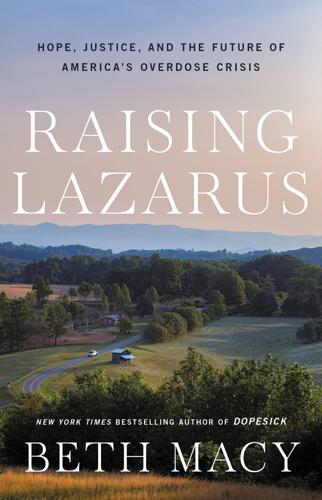
Raising Lazarus: Hope, Justice, and the Future of America’s Overdose Crisis
by
Beth Macy
Published 15 Aug 2022
In Kentucky, the neediest drug users had fallen to seeking a methamphetamine-like rush by injecting an insecticide, which they called “wasp dope.” In nearby Shelby, North Carolina, in a single day during the summer of 2020, five people passed out in gas-station parking lots after taking “dirty thirties,” fake thirty-milligram oxycodone pills that turned out to be pure fentanyl. The following spring, a veterinary tranquilizer called xylazine caused a spike in overdoses and particularly nasty ulcers. But as the pandemic dragged on, drug deaths continued their upward trajectory, in part due to the sheer stress of quarantine. More people were using drugs while alone (with no one to Narcan them), and even people in long-term recovery were relapsing at record rates due to pandemic-related job losses, anxiety, and depression.
…
Odum lost her nursing license after becoming addicted to prescribed painkillers—following a fall on Thanksgiving of 2003. She had been carrying a broccoli casserole down a flight of stairs and missed a step. She was in methadone treatment for a decade, including in 2007, when her mother died from a combination of oxycodone and Xanax. In 2018, Odum’s thirty-year-old daughter died from a fentanyl and methamphetamine overdose. “Our foster system is so overrun that my husband and I are now raising our four grandchildren, and so are all the grandparents we know,” Odum said. “All our kids are dead.” In Mount Airy, it felt like the town was trying to freeze-frame itself in a black-and-white postwar situation comedy.
…
That same week, Vice President Kamala Harris was being pounded by Fox News for visiting Mexico without going to the border. Comer wasn’t wrong about fentanyl being a scourge. Black and Brown Americans were dying from it at alarming rates. Benzodiazepines, heroin, cocaine, and so-called dirty thirties (fake oxycodone pills) were all being routinely contaminated or replaced with the dangerous synthetic. The pain-pill-as-killer narrative was passé, Comer asserted; it was illicit fentanyl and methamphetamine, not OxyContin, that now drove most of the present harms and overdose deaths. In recent years, law enforcement agencies, the CDC, and other medical authorities had overreacted to the first wave of the opioid crisis by clamping down too hard on opioid-prescribing.
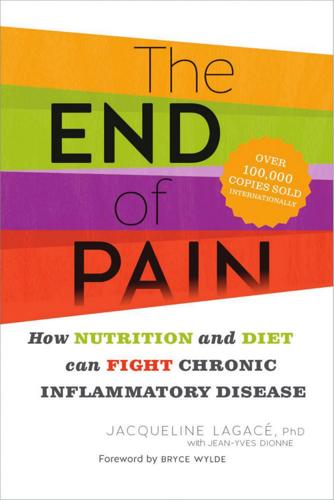
The End of Pain: How Nutrition and Diet Can Fight Chronic Inflammatory Disease
by
Jacqueline Lagace
Published 7 Mar 2014
Probably the last things you or your doctor would ever suspect of contributing to your arthritis pain are the fiber-rich whole-grain bread you’ve eaten all your life, the “prescribed” glass of milk that you’re proud to drink daily or just how you’ve been cooking your fish. This is all healthy, right? When it comes to conventional pain management, the mainstream solution has too narrowly focused on the use of analgesics such as acetaminophen, oxycodone, propoxyphene or nonsteroidal anti-inflammatory drugs (nsaids) such as aspirin, Advil and ibuprofen. It may come as a big surprise that most of these treatments have actually shown limited effectiveness in randomized controlled clinical trials or are known to have significant and often severe side effects.
…
Opioids have different capacities to reduce the perception of pain, depending on how they bind — with greater or lesser affinity — to one or several receptors specific to them. Opioids most often used in chronic, moderate and severe pain are buprenorphine, fentanyl, methadone, hydromorphone, morphine and oxycodone.6 The use of opioids for the treatment of chronic pain due to diseases other than cancer— such as osteoarthritis, rheumatoid arthritis 1 9 6 > t h e e n d o f pa i n and neuropathic pain — raises clinicians’ concerns. They fear that their patients could develop physical dependence on, addiction to and tolerance towards these medications and that patients may use these drugs inappropriately.
…
Böger, K. Budd et al., “Opioids and the managements of chronic severe pain in the elderly: Consensus statement of an International Expert Panel with focus on the six clinically most often used World Health Organization Step iii opioids (buprenorphine, fentanyl, hydromorphone, methadone, morphine, oxycodone),” Pain Pract, vol. 8, 2008, p. 287–313. 7. A. Gibofsky and R.L. Barkin, “Chronic pain of osteoarthritis: Considerations for selecting an extended-release opioid analgesic,” Am J Therapeut, vol. 15, 2008, p. 241–55. 8. Ibid. 9. J. Manzanares, M. Julian and A. Carrascosa, “Role of the cannabinoid system in pain control and therapeutic implications for the management of acute and chronic pain episodes,” Curr Neuropharmacol, vol. 4, 2006, p. 239–57. 10.
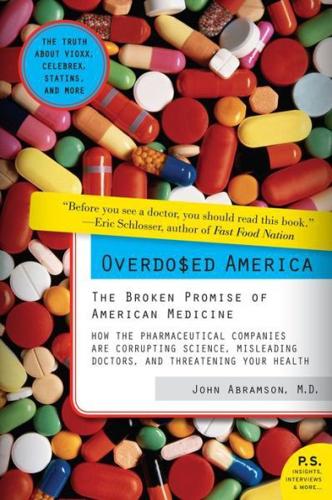
Overdosed America: The Broken Promise of American Medicine
by
John Abramson
Published 20 Sep 2004
Expensive brand-name drugs are frequently tested against a placebo (meaning no therapy) even when effective alternative therapies are already in use. Evidence of being significantly more effective than no treatment is sufficient for the FDA to approve new drugs and for doctors to prescribe them in place of older, established, and usually less expensive treatments. A study of OxyContin, a long-acting form of oxycodone (commonly known as Percocet), provides a particularly dramatic example. The study was designed to test OxyContin’s ability to provide relief to patients who were having “moderate to very severe” pain following knee replacement surgery. Patients were randomized into two groups: those assigned to the treatment group received OxyContin twice daily as “preemptive” pain medication, in a dose equal to six Percocet tablets over each 24-hour period.
…
A hint: the people in the OxyContin group averaged the equivalent of more than 10½ Percocet tablets per day, while the people in the control group averaged 2½ Percocet tablets per day. The results of this study, published in the Journal of Bone and Joint Surgery, concluded: “Preemptive use of controlled-release oxycodone [OxyContin] during rehabilitation following total knee arthroplasty [replacement] leads to improved pain control, more rapid functional recovery, and a reduced need for inpatient rehabilitative services.” In other words, treatment of moderate to very severe pain after knee replacement surgery with preemptive doses of OxyContin is superior to treatment with preemptive doses of nothing.
…
William, 197, 208 osteoarthritis, 190–94. See also Celebrex and Vioxx osteopenia, 210, 215 osteoporosis, 210–20 drugs, 246–47 marketing of hormone replacement therapy for, 62–64 Our Bodies, Ourselves, 219 overuse of medical services, xix–xx, 52–53, 84, 178–81. See also supply-side medical care OxyContin (oxycodone), 102–3, 121 pain control, 121–22, 191 paradigms, medical, 202–3 Pasteur, Louis, 189, 194–95 patents, 153, 241 patients medical consumerism of (see marketing; medical consumerism) persons vs., 56–57, 206–8 relationship of, with doctors (see doctor-patient relationship) responsibility of, 256–60 rights of, and health insurance, 80, 162–63 uninsured, xxi, 20, 46, 253–54 unrepresentative study, 16–17, 33, 103–4, 206–8, 251 Paxil, 116–17, 163, 243 peer review.
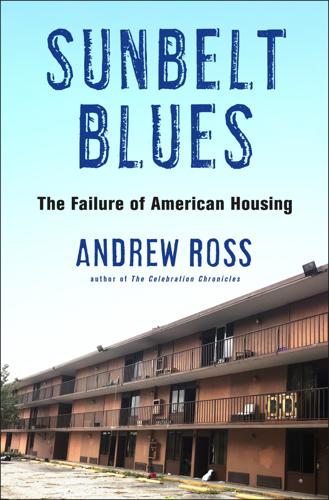
Sunbelt Blues: The Failure of American Housing
by
Andrew Ross
Published 25 Oct 2021
In the first decade of the twenty-first century, its largely unregulated “pill mills” were the primary supplier of oxycodone products to the East Coast and Great Lakes states.1 “Doctor shoppers” drove down and back up Interstate 75 all the way into New England, picking up and delivering pills on a route known as the “Oxy Express.” Between 2006 and 2012, pharmaceutical firms sent 5.6 billion pills to Florida’s pharmacies and drugstores.2 By 2010, ninety of the top hundred opioid prescribers in the country were Florida doctors, and 85 percent of the nation’s oxycodone flowed from the state. After the crackdown came in 2011, users turned almost overnight to heroin.
…
After the crackdown came in 2011, users turned almost overnight to heroin. Overseas suppliers had found a way to evade the post-9/11 security blanket and could now offer a cheaper opioid product than the pills. Processed from opium poppies, heroin has a similar molecular structure to oxycodone and produces the same kind of high.3 The overdose statistics flipped from one opioid to the other, as heroin-related deaths shot up. Greg and Linda Murrin, Sandpiper residents for a month in the winter of 2018, told me how the pain pills were a gateway to the needle for them and many others they knew. After work dried up in their South Carolina town, they rode the Oxy Express down to Broward County in 2009.
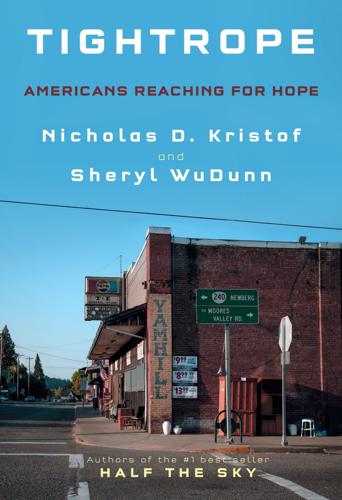
Tightrope: Americans Reaching for Hope
by
Nicholas D. Kristof
and
Sheryl Wudunn
Published 14 Jan 2020
Daniel McDowell, a war veteran now in a different kind of fight for his life, to overcome drug use, in Baltimore (photo by Lynsey Addario) Daniel received treatment for his knees, including meniscus surgery, and was prescribed a potent synthetic opioid called Tramadol. He welcomed medication to numb his physical and emotional pain. Military doctors soon referred him to an outside pain clinic that prescribed him large quantities of oxycodone and other opioid painkillers. When Daniel switched doctors, the new physician looked at his medical record in horror. “You’re on more medication than someone with terminal cancer would be on,” he told Daniel, and he cut back on the dosing. Now desperate for pain pills and running out, Daniel scrambled for alternatives and raged at the new doctor.
…
One element of prevention is to reduce opioid prescribing by doctors and dentists, and that is belatedly taking place, but the numbers are still far higher than in our peer countries; in 2016, doctors wrote more opioid prescriptions in the state of Michigan than the number of people living in the state. When Wen had a baby in 2017, she was prescribed a thirty-day supply of oxycodone. “Why do I get this?” she asked. “Just in case you need it,” the doctor explained. “We don’t want you to be in pain.” Prevention also means criminal prosecutions of major drug smugglers and in particular targeting Chinese businesses that operate fentanyl supply houses. But the broadest challenge in prevention is to recognize that addiction is a symptom of a deeper malaise and that a strategy also has to offer jobs, education and hope.
…
First, good union jobs disappeared, because of technology, automation, trade, political pressure on unions and a general redistribution of power toward the wealthy. As well-paying jobs for the less educated disappeared, the self-esteem of workers who couldn’t find new jobs plummeted and some obtained prescription painkillers for health conditions and soon abused the medication. Second, there was an explosion of drugs—oxycodone, meth, heroin, crack cocaine and now fentanyl. The proliferation of drugs was partly driven by the professionalization of drug cartels and by the reckless marketing of prescription painkillers by pharmaceutical companies. Third, the war on drugs meant that addiction became far more difficult to reconcile with daily life than in the old days when substance abuse involved alcohol.

No Regrets, Coyote: A Novel
by
John Dufresne
Published 1 Jun 2014
Five elected officials had been indicted in the past year for fraud, extortion, bribery, money laundering, and conspiracy to commit wire fraud. Six cops had gone to jail for assault (on camera), extortion, fraud (on camera), coercing sex from illegal immigrants, groping female suspects at traffic stops, distributing Oxycodone, and grand theft (a tractor). A half dozen other public officials had been arrested and faced charges. A town manager was busted for stealing $500,000 from town coffers. One county commissioner made the mistake of accepting a doggie bag stuffed with cash from an undercover FBI agent. Nothing happens in Everglades County, a Democratic stronghold, by the way, without some unctuous bootlicker getting his or her payoff.
…
He told me they’d located Red’s family in Texas and that one of the brothers was already on his way to claim the body and collect Red’s possessions. But he wouldn’t be able to get the body until after the autopsy, which wouldn’t take place today because the medical examiner was going to be tied up in court all day. His son, Dr. Junior, had been busted on racketeering charges and for trafficking in Oxycodone and conspiring to traffic. He made $150,000 a day off his seven pain clinics. I hoped they’d put him away for the duration plus one, but I already knew he’d get a slap on the wrist. Bill Aubuchon and Ellen Hillistrom told me that they were head over heels in love. In seventh heaven, Bill said. Tickled pink, Ellen said.
…
Eventually, Chris realized that he was not changing the world as he had hoped, was not even making a significant difference in any of his clients’ lives, was not making any child’s burden more tolerable, was not the bearer of hope that he had supposed, and he quit the underpaid, ineffectual, and powerless life of a social worker and became a cop, where he could do more good. So he began his new life, and that life began to include a host of pharmaceutical drugs that he had confiscated from dealers in the hood. Chris and Lily moved from Xanax and Vicodin to Adderall and Oxycodone to crack and meth in relatively short order. After Chris was suspended from the department for the third time, he was punished with an assignment to Internal Affairs. Lily lost her job at the hospital when she was caught pilfering patients’ meds and replacing them with Wal-Zyr and vitamins. Several times over the holidays, Lily had thought to report her husband missing, but that would have meant people and questions, and she was not up for the emotional turmoil sure to ensue.

Drugs Without the Hot Air
by
David Nutt
Published 30 May 2012
Although physical dependence can happen when these drugs are taken therapeutically, the psychological cravings of addiction seem to occur only when these drugs are taken in non-prescribed ways. The most common prescription drugs that are diverted and misused are: benzodiazepines prescribed for anxiety and sleep disorders; painkillers such as codeine, morphine and oxycodone; and stimulants such as Ritalin prescribed for attention deficit hyperactivity disorder which we’ll cover in chapter 13. What are benzodiazepines and how do they work? Benzodiazepines first appeared in the 1960s, for treating a range of physical and mental-health problems. Benzodiazepines replaced barbiturates, another sedative tranquilliser that had been around since the 1860s, and were the first wave of drugs found to be effective for severe anxiety.
…
“Incorrect use” might mean taking too much of the painkiller, or taking it too often, which might also lead to addiction, but the headaches can happen even if the patient isn’t addicted. These should stop once the patient comes off the medication. There is a difficult balance to be struck between protecting people from addiction and being able to treat them effectively. In the USA, where strong painkillers like oxycodone are much more readily accessible, patients do sometimes misuse them, and there is also a problem with drugs being diverted to family and friends who then become dependent or addicted. In the UK the medical profession is generally so reluctant to dispense painkillers that diversion of this sort isn’t much of a problem, but it does mean that some people with chronic pain suffer unnecessarily.
…
view=Binary 168. www.guardian.co.uk/world/2010/mar /05/korean-girl-starved-online-game 169. www.drugabuse.gov/sites/default/files/ sciofaddiction.pdf 170. info.cancerresearchuk.org/prod_consump/ groups/cr_common/@nre/@sta/documents/ generalcontent/crukmig_1000ast-2989.xls 171. www.pnas.org/cgi/doi/10.1073/pnas.1119598109 172. www.guardian.co.uk/society/2010/oct/ 31/race-bias-drug-arrests-claim 173. www.nytimes.com/2011/06/17/opinion/ 17carter.html 174. www.guardian.co.uk/politics/2007/feb/ 11/uk.drugsandalcohol1 175. www.ukcia.org/research/ ProjectionsOfImpactOfRiseInUse/ ProjectionsOfImpactOfRiseInUse.pdf 176. www.beckleyfoundation.org/2011/11/19/ public-letter-in-the-times-and-guardian-calling-for-a-new-approach 177. www.homeoffice.gov.uk/drugs/drug-law/ 178. www.time.com/time/world/article/ 0,8599,1887488,00.html 179. www.apa.org/science/programs/ conference/2011/harwood.ppt 180. www.msnbc.msn.com/id/35914759/ns/business-world _business/t/wachovia-settle-drug-money-laundering-case 181. www.dailymail.co.uk/news/article-435393/ Exclusive-Cameron-DID-smoke-cannabis.html 182. www.lawrencephillips.net/ Decision_conferencing.html Index Page numbers in bold indicate definitions. 12-step programme, 1, 2 5HT2A receptors and psychedelics, 1 acamprosate, 1 acetylcholine receptors, 1 ACMD, 1, 2, 3, 4, 5, 6, 7, 8, 9, 10, 11, 12, 13, 14, 15, 16, 17, 18, 19, 20, 21, 22 cannabis report, 1 drugs ranked, 1 expert panel for MCDA, 1 purpose, 1 ranking procedure, 1 ranking, limitations, 1 ranking, reaction to, 1 ranking, results, 1 ranking, weights, 1 sacked from, 1 website, 1 acquisitive crime, 1, 2, 3 Portugal, 1 UK statistics, 1 activate, 1 acute, 1 Adams, Tony, 1, 2 addiction, 1 alcohol, Tony Adams, 1 Amy Winehouse, 1, 2 benzodiazepines, 1 brain mechanisms, 1 curing, 1 diagnosing, 1 dynamics and, 1 gambling, 1 habits and, 1 history, 1 kinetics and, 1 memories in, 1, 2, 3 neurotransmitters and, 1 painkillers, to, avoiding, 1 Pete Doherty, 1 preventing, 1 protective factors against, 1 Ritalin and, 1 treatment difficult, 1 treatment with psychedelics, 1 treatment, Alcoholics Anonymous, 1 treatment, evaluating, 1 treatment, future, 1 treatment, pharmacological substitutes, see pharmacological substitutes treatment, Portuguese experiment, 1 treatment, psychological, 1 withdrawal and, 1 addictive personality, 1, 2 protective factors, 1 addictiveness crack, 1 routes of use, 1 smoking, 1 tolerance and, 1 withdrawal and, 1 adenosine coffee produces, 1 receptors, 1 ADHD, 1, 2, 3 Ritalin treatment for, 1 Advertising Standards Authority, 1 advice on drugs, 1 aerobatics, 1 aerosols, see solvents agonist, see also antagonist and pseudo-antagonist, see also full and partial agonists full, 1 partial, 1 agoraphobia and alcohol, 1 AIDS, see HIV/AIDS Ainsworth, Bob, and decriminalisation, 1 Al Qaeda drugs money, 1 alcohol, 1, 2 addiction, 1 addiction endorphins, 1 agoraphobia and, 1 ALDH2 enzyme, 1, 2 alternatives, 1 anxiety and, 1 availability, 1 binge drinking, 1 cirrhosis and, 1, 2 cocaethylene, 1, 2 cocaine combined with, 1 dependence treatment, 1 depressant, 1 endorphins and, 1 ethnic groups, ALDH2 and, 1 GHB treatment for, 1 harms reduction, 1 health priority, 1 inverse agonist, 1 mixing with drugs, 1, 2, 3, 4, 5 price, 1 PTSD, and, 1 road safety, 1 smuggling, 1 sport, drugs in, 1 treatment in Italy and Austria, 1 treatment, LSD in, 1 withdrawal, 1, 2, 3 withdrawal, benzodiazepine treatment for, 1 withdrawal, ibogaine treatment for, 1 alcohol policy, drinks industry, 1 alcoholics anxiety disorders, 1, 2 dopamine receptor, 1 Alcoholics Anonymous, 1, 2, 3, 4, 5, 6 ALDH2 enzyme and alcohol, 1, 2 allergic reaction, 1 Alpert, Richard, 1 Alpha receptors, 1 alternative approach, legislation, 1 licensed drug premises, 1 licensed drug sales, 1 alternatives for farmers, 1 alternatives to War on Drugs, 1 Portuguese approach, 1 Ameisen, Olivier, 1 amines, 1 amitriptyline, 1 amphetamines, 1 child soldiers given, 1 performance enhancers, 1 stimulant, 1 war, in, 1 amputation of limbs from smoking, 1 anabolic, 1 anabolic steroids, 1, 2, 3 corticosteroids, difference, 1 effects, 1 harms, 1 harms reduction, 1 HIV/AIDS, treatment in, 1 overdose, unlikely, 1 performance enhancers, 1 sex hormones, 1 suicide and, 1 uses, 1 anabolic-androgenic steroids, 1 anadenanthera peregrina, 1 analgesic-induced headaches, 1 analogues, synthetic, 1 ancient Greece Elysian Fields, 1 mushrooms, 1 Andes, cocaine in, 1 androgenic, 1 anhedonia, 1 antagonist, 1, 2, 3 vaccines, anti-drug, 1 anthrax, 1 anti-drug vaccines, 1 anti-inflammatory, corticosteroids, 1 anti-stress corticosteroids, 1 antibody for cocaine overdose, 1 antidepressants, 1 how they work, 1 tricyclic, 1 anxiety addiction and, 1 alcohol and, 1 benzodiazepines for, 1 cannabis and, 1 depressants for, 1 disorder in alcoholics, 1, 2 GABA receptors, low levels, 1 neurotransmitters and, 1 new drugs for, 1 panic attacks, 1 PTSD, in, 1 reduction in terminal illness, 1 treatment outcomes, 1 treatment, SSRIs, 1 archery, 1 ASA, 1 asphyxiation from solvents, 1 aspirin, 1 side effects, 1 aspirin, side effects, 1 Ativan, 1 atom bomb, spiritual antidote to, 1 attention deficit hyperactivity disorder, see ADHD auditory effects, schizophrenia, 1 Australia, decriminalisation of drugs in, 1 ayuesca, psychedelic, 1 baby, starved by parents, 1 baclofen, 1 bagging, route of use, 1 ban, temporary order, 1 banisteriopsis caapi, 1 banks, money-laundering, 1 barbiturates, 1, 2, 3 PTSD, and, 1 suicide, 1 Barcelona, 1 battle fatigue, 1, see also PTSD BCS, see British Crime Survey benefits cannabis, 1 mephedrone, 1 psychedelics, 1 Benzedrine, 1, 2 benzodiazepines, 1, 2 addiction, 1 alcohol treatment, in, 1 benefits, 1 depressant, 1 endogenous, 1 GABA receptors, 1 harms, 1 how they work, 1 Librium, 1 overdose, safer, 1 physical dependence, 1 rebound less likely, 1 side effects, few, 1 suicide and, 1 withdrawal, 1 benzylpiperazine, 1 Bernays, Edward, 1 beta blockers in sport, 1 Betts, Leah, 1, 2 bhang, 1, 2 binge cocaine, 1 drinking, 1, 2, 3 LSD, impossible, 1 tolerance and, 1 treatment, 1 Bird, Sheila, Professor, 1 bladder, ketamine, 1 Blair, Tony, 1 blind trial, 1 Bolivia, 1, 2 coca, 1, 2 bong, 1 brain addiction mechanisms, 1 default mode, 1 brain chemicals, 1 receptors, 1 Brain Science, Addiction and Drugs programme, 1 dispense with care scenario, 1 high performance scenario, 1 neighbourhood watch scenario, 1 treated positively scenario, 1 Brake, Tom, MP, 1 Breakdown Britain, 1, 2 British Aerobatic Association, 1 British Crime Survey, 1 Brokenshire, James, 1 bromides, PTSD, and, 1 bubbles, see mephedrone buprenorphine, 1, 2 advantages, 1 blocks on-top heroin use, 1 early problems, 1 effects, 1 heroin susbstitute, 1 how it works, 1 morphine alternative, 1 opioid, 1 origin, 1 partial agonist for heroin, 1 pharmacological substitute, as, 1 bupropion, 1 burglary, 1, 2 Burrows, David, 1 butane, see also solvents, 1 Bwiti cult, 1 BZP, 1 caffeine Coca-Cola, 1 coffee, 1 stimulant, 1 withdrawal, 1, 2 calmness, drugs for, 1 Camden, 1 “Cameron approach”, 1 Cameron, David, MP, 1, 2, 3, 4, 5 Cameroon, 1 Campral, 1 cancer, see also terminal illness ecstasy in treating, 1 cannabis, 1, 2 ACMD report, 1 anxiety and, 1 as medicine, historical, 1 as medicine, present, 1 benefits, 1 cluster headache and, 1 decriminalisation of drugs, 1 different forms compared, 1 downgrading, 1, 2 farmers required to grow, 1 gateway to more harmful drugs, 1 harms, 1 harms, compared to prison, 1 hemp, 1 heroin instead of, 1 multiple sclerosis and, 1, 2, 3 munchies, the, 1 psychoactive ingredient, 1 re-upgraded, 1 receptors, 1, 2, 3, 4 routes of use, 1 schizophrenia, 1, 2 terminal illness, for, 1 therapeutic drug, as, 1 tinctures, 1 upgrading, 1, 2 cannabis indica, 1 Carlin, Eric, 1, 2 Carnage UK, 1 Carter, Jimmy, 1 Case for Heroin, The, 1 catechol O methyl transferase, see COMT cathinones, 1 banned, 1 naphyrone, 1 synthetic, 1 CBD, 1, 2, 3 CBT, 1, 2 Celera Genomics and genetic sequencing, 1 Celexa, 1 Centre for Social Justice, 1 Champix, 1 Champs Elysees, 1 chemicals, brain, 1 chewing, routes of use, 1 Chief Medical Officer, 1 child soldiers given amphetamines, 1 children advice to, 1 age to advise at, 1 Chinese, alcohol and, 1 cholecystokinin, 1 chronic, 1 cigarettes advertising, 1 generic packaging, 1 invention, 1 labelling, 1 wars, in, 1 Cipramil, 1 cirrhosis, 1 cirrhosis and alcohol, 1, 2 cirrhosis and khat, 1 citalopram, 1 civil liberties, 1 Clarke, Ken, 1 Class of drug, see also downgrading, see also upgrading too high, perverse consequences, 1 kinetics affect, 1 prison sentences by, 1 purpose, 1 reviewing, 1 social context and, 1, 2 classification of harms, 1, 2 climate change, 1, 2 Clinton, Bill, 1 clonidine, 1 clostridium, 1 cluster headache cannabis and, 1 psychedelics for, 1, 2 CMO, see Chief Medical Officer CNN, 1 co-ingestants, 1, 2 coca, 1 Bolivia, 1, 2 Coca-Cola and caffeine, 1 Coca-Cola and cocaine, 1 cocaethylene, 1 cocaine, see also crack, 1, 2 addiction endorphins, 1 alcohol combined with, 1 binge, 1 Coca-Cola, 1 cocaethylene, 1, 2 crack compared, 1 crop destruction, 1, 2, 3 deaths in drugs war, 1 effects, 1 environmental damage, 1 farmers, 1 freebase is crack, 1 history, 1 how it works, 1 hydrochloride, 1 insecticide, as, 1 international damage, 1 manufacturing process, 1 nose, 1 overdose mechanism, 1 overdose, antibody for, 1 political damage, 1 powder, 1 rainforests affected, 1, 2 routes of use, 1, 2 stimulant, 1 vaccine, anti-, 1 wine, see Vin Mariani Cockburn, Joslyne, 1 codeine, 1, 2, 3, 4, 5 cough medicine, removed, 1 headaches induced, 1 opioid, 1 coffee adenosine, produces, 1 caffeine, 1 cognition enhancer, as, 1 effects, 1 history, 1 how it works, 1 origin, 1 coffee shop model, Netherlands, 1, 2 cognition enhancer coffee as, 1 cognition enhancers, 1 common, scenario, 1 economic divide, 1 exams, in, 1 memory and, 1 modafinil, 1 uses, 1 cognitive behavioural therapy, see CBT Colombia, 1, 2 Columbus, Christopher, 1 compensating farmers, 1 COMT dopamine and, 1 noradrenaline and, 1 pain sensitivity, 1 types, 1 consent, see, informed consent contraceptive pill, 1 Convention on Psychotropic Substances, 1 corruption, 1 corticosteroids anabolic steroids, difference, 1 muscle wasting with, 1 cortisol, 1 cost crime, drug-related, 1 drug habits, of, 1 War on Drugs, 1 cot death, see Sudden Infant Death Syndrome cough medicine, codeine removed, 1 Counterblast to Tobacco, 1 crack, see also cocaine, 1 addictiveness, 1 cocaine compared, 1 dopamine receptors and, 1 harms, 1 kinetics, 1 origin, 1 purity, 1 routes of use, 1 vaporisation temperature, 1 craving, 1 creativity enhanced by psychedelics, 1 CRF, 1 crime, see also acquisitive crime drug-related, cost, 1 statistics, 1 Crimean War, cigarettes in, 1 criminalisation effects, 1 of sick end disabled, 1 smoking, 1 supply reduction, 1 criteria for harms, 1, 2 crop destruction, 1 cocaine, 1 crop destruction, cocaine, 1 cultural context, see social context curing addiction, 1 cycling, 1 D-cycloserine, 1, 2 Daily Mail, the, 1, 2, 3 DALY, 1 DARE programme, 1 costs, 1 does not work, 1 data set, minimum required, 1 day with drugs, 1 day without drugs, 1 decriminalisation of drugs Ainsworth, Bob, 1 Australia, 1 cannabis, 1 legalisation differs, 1 Mowlam, Mo, 1 Portugal, 1, 2, 3 UK independence party, 1 UN Conventions and, 1 default mode of brain, 1 Delgarno, Phil, 1 demand reduction statistics, 1 War on Drugs, 1 demographic imbalance, 1 demographic shifts, 1 dependence, see physical dependence, psychological dependence depressants, 1, 2 alcohol, 1 anxiety, for, 1 benzodiazepines, 1 “downers”, 1 GHB, 1 depression psilocybin, 1 vicious cycle, 1, 2 designer drugs mephedrone, 1 problems legislating for, 1 development of new drugs, 1 impediments, 1 social implications, 1 War on Drugs hinders, 1 diabetes, 1 diabetes, dietary treatment, 1 diabetes, insulin treatment, 1 diagnosing addiction, 1 dietary treatment, diabetes, 1 DIMS, Netherlands, 1, 2 disability-adjusted life year, 1 discriminatory policing, 1 disease, infectious, War on Drugs and, 1 disease-modifying agents, 1 dispense with care scenario, 1 disrepute, law into, 1 dissuasion board, 1 diverting prescription drugs, 1, 2, 3, 4, 5, 6 Ritalin, 1 DMT, see also ayuesca, 1 psychedelic, 1 Doblin, Rick, 1 Doherty, Pete, 1, 2 Doll, Richard, 1, 2 Donaldson, Sir Liam, 1 Doors of Perception, The, 1 dopamine, 1 COMT and, 1 levels in withdrawal, 1 nicotine withdrawal, in, 1 receptors, 1, 2, 3, 4, 5, 6, 7 receptors in alcoholics, 1 receptors vicious cycle, 1 receptors, crack and, 1 receptors, methamphetamine and, 1 receptors, monkey, 1 receptors, stimulants and, 1 reuptake, 1 reuptake inhibitor, Ritalin, 1 reward chemical, 1 tobacco releases, 1 transporters, 1 double-blind trial, 1 down-regulating receptors, 1, 2 downgrading ecstasy recommendation, 1, 2 cannabis, 1, 2 purpose, 1 Drake, Sir Francis, 1 drinking, routes of use, 1 drinks industry alcohol policy, 1 misleading messages, 1 driving, drugs and, 1 Drone, see mephedrone drug, 1 defined, 1 efficacy, 1 Drug Abuse Resistance Education, see DARE Drug Information and Monitoring System, see DIMS, Netherlands drug ranking, Netherlands, 1 drug tourism, 1 drug trials informed consent, 1 drug trials, informed consent, 1 drug-related factors, 1 drugs, see also performance enhancer anti-insect defence, 1 Classes, see Class of drug daily cycle, 1, 2 different forms, why, 1 evolution, 1 future developments, 1 harms related to physical form, 1 history, 1 mixing, 1 mixing with alcohol, 1, 2, 3, 4, 5 mixing, dangers, 1, 2, 3 mixing, speedballs, 1 neurotransmitters, mimic, 1 performance enhancing, see performance enhancers plant origin, 1 prescription, see prescription drugs profit margin, 1 psychedelic, see psychedelics reasons for taking, 1 sport, in, see sport, drugs in why people take, 1 withdrawal, 1 drugs in war, 1 amphetamines, 1 morphine, 1 prevalent, 1 recovery from, 1 unsanctioned, 1 Drummond, Colin, 1 Duncan Smith, Iain, 1 Dutch, see Netherlands Dutch courage, 1 dynamics, 1 addiction and, 1 mephedrone, 1 dynorphins, 1 dyslexia, 1 early-onset Parkinson’s, 1 Easter Parade, 1 eating overdose, increases risk of, 1 routes of use, 1, 2 economic divide and cognition enhancers, 1 economic growth low, scenario, 1 slower, scenario, 1 strong, scenario, 1 ecstasy, 1, 2 cancer, and, 1 dangers of, 1 death from, 1 downgrade recommended, 1, 2 effects, 1 empathy, first called, 1 harms, 1, 2 media reaction, 1 Parkinson’s and, 1 precautions, water, 1 properties, 1 PTSD, and, 1, 2 serotonin and, 1 withdrawal, 1 education, immediate downsides, about, 1 efficacy of a drug, 1 Egypt, 1 electron, 1 Elysian Fields, 1 Elysian fields, 1 empathogenic, 1 empathogens, 1 empathy, see ecstasy emphysema, 1 endocannabinoid system, 1, 2 endocannabinoids, 1 endogenous benzodiazepines, 1 endorphins, 1, 2, 3, 4, 5, 6, 7, 8, 9 alcohol addiction, 1 alcohol and, 1 cocaine addiction, 1 heroin addiction, 1 receptor and heroin, 1 receptors, 1, 2, 3, 4 reward chemical, 1 endoscopies, 1 endozapines, 1 energisation effect, suicide, 1 enkephalins, 1 entheogenic, 1, 2, 3 environmental damage, cocaine, 1 Environmental Protection Agency, 1 enzymes, 1 ephedra, 1 ephedrine, 1 epidemic, mental-health, 1 epilepsy, 1, 2 equasy, 1 defined, 1 equine addiction syndrome, see equasy ergotamine and Salem witch trials, 1 ergotamine, LSD derived from, 1 Estimating Drug Harms: A Risky Business, 1 ether, 1 ethical issues, genetic sequencing, 1 ethnic groups, ALDH2 and alcohol, 1 Eton, David Cameron at, 1 evidence-based policy, 1, 2, 3, 4, 5 evolution of drugs, 1 exams, cognition enhancers in, 1 experimentation, delay to reduce harms, 1 farmers alternatives for, 1 cannabis, required to grow, 1 coca, 1 compensating, 1 Pakistan, alternatives for, 1 supporting, 1 Thailand, alternatives for, 1 unequal trade terms, 1 flumazenil, 1 flumazenil as tracer, 1 fluoxetine, 1 fly agaric mushrooms, 1 flying, drugs and, 1, 2 fMRI, 1 Foresight programme, 1 pharmaceutical industry, 1 stakeholders, 1 Frank Statement to Cigarette Smokers, 1 freebase, 1 freedom to choose addiction and, 1 impact on others, 1 objective information required, 1 Freud, Sigmund, 1, 2, 3, 4, 5 Freudian psychoanalysis, 1 Frischer, Martin, 1 full agonist, 1 heroin, for, 1 functional MRI, 1 future drugs, 1 issues, 1 GABA glutamate, blocked by, 1 memory formation, 1 receptors, 1, 2, 3, 4, 5, 6, 7, 8, 9, 10, 11, 12 GABA receptors anxiety and, 1 benzodiazepines, 1 neuroimaging, 1 overdose, 1 tolerance and, 1 withdrawal and, 1 Gabon, 1 Gaedecke, Friedriche, 1 gambling addiction, 1 gangs, Vietnamese, 1 ganja, 1 gap between neurons, see synapse gateway to more harmful drugs cannabis, 1 prison, 1 GBL, 1, 2, 3, 4 generic packaging, cigarettes, 1 genetic sequencing, 1 Celera Genomics, 1 ethical issues, 1 risks, 1 Geneva International Convention on Narcotics Control, 1 genotyping, see genetic sequencing GHB, 1, 2, 3, 4, 5, 6, 7, 8 alcohol treatment, in, 1 dangers, 1 depressant, 1 tolerance to, 1 Gilmore, Sir Ian, 1 Gin Craze, 1, 2, 3 glue, see solvents glutamate GABA, blocks, 1 memory formation and, 1 receptors, 1 grey campaigners, 1 Guardian, the, 1, 2, 3, 4, 5 Gucci, profit margin, 1 Guinea Bissau, 1 Guinea-Bissau, 1 Guinea-Bissau, collapsing, 1 Guy’s and St Thomas’ Hospital, 1 habits and addiction, 1 haemoglobin, 1 half-life, 1 hallucinations, 1, 2, 3, 4, 5, 6 schizophrenia, 1 Hargreaves, Patrick, 1 harms 16 types, 1 9 types, 1, 2 anabolic steroids, 1 cannabis, 1 classification, 1, 2 crack, 1 ecstasy, 1, 2 kinetics affect, 1 measuring, 1 measuring, political reaction, 1 measuring, purpose, 1 mephedrone, 1 others, to, 1 psychedelics, 1 related to form of drug, 1 routes of use, 1 users, to, 1 harms reduction alcohol, 1 alcohol alternatives, 1 alcohol availability, 1 alcohol binge drinking, 1 alcohol dependence, 1 alcohol price, 1 alcohol priority, 1 alcohol, road safety, 1 anabolic steroids, 1 delay experimenting, 1 smoking ban, 1 smoking restrictions, 1 War on Drugs, 1 Harrods sold cocaine and heroin, 1 Harvard, Leary Timothy at, 1 hash, skunk, compared, 1 headaches, see also cluster headache analgesic-induced, 1 codeine-induced, 1 Hearst, William Randolph, 1 hemp, 1 hepatitis, injecting, risk, 1, 2 heroin, 1, 2, 3, 4 £300/week, 1 £500/week, 1 addiction endorphins, 1 addiction, Pete Doherty, 1 buprenorphine blocks on-top use, 1 cannabis, instead of, 1 endorphin receptor targeted, 1 full agonist for, 1 methadone and withdrawal, 1 methadone blocks on-top use, 1 morphine alternative, 1 Netherlands, in, 1 opioid, 1 opium, from, 1 origin of name, 1 overdose, benzodiazepines and, 1 painkiller, as, 1 painkiller, is most effective, 1 partial agonist for, 1 pharmacological substitutes, 1 prisoners overdose on, 1 receptors affected, 1 synthesised 1874, 1 therapeutic, as, 1 treatment for, 1 treatment with heroin itself, 1 treatment, British model, 1 treatment, Switzerland, 1 withdrawal, 1 heroin susbstitute buprenorphine, 1 methadone, 1 high performance scenario, 1 history cocaine, 1 coffee, 1 drugs, 1 LSD, 1 tobacco, 1 HIV/AIDS anabolic steroids treatment, 1 injecting, risk, 1, 2, 3 reduced, Portuguese experiment, 1 Russia, 1 TurBo-HIV, 1 Hofmann, Albert, 1 Holland, see Netherlands Holmes, Sherlock, 1 Home Secretary, see also Johnson, Alan, see also Smith, Jacqui, 1, 2 horse tranquilliser, 1 horse-riding ecstasy, comparison, 1, 2 Parkinson’s and, 1 huffing, route of use, 1 Human Genome Project, 1 Human Rights Watch, 1 Huxley, Aldous, 1, 2 hydrochloride, cocaine, 1 hydrochlorides, vaporisation temperature, 1 hypertension, rebound and, 1 hyponatraemia, 1, 117 ibogaine, 1, 2 addiction treatment, in, 1 as wit hdrawal treatment, 1 psychedelic, 1 ibuprofen, 1 imipramine, 1 impotence, 1 India Kerala and opiates, 1 morphine as painkiller, 1 Indian Hemp Drugs Commission report, 1 informed consent NHS, 1 informed consent, drug trials, 1 inhaling routes of use, 1 inhaling, routes of use, 1 initial misery with SSRIs, 1 injecting dangers of, 1 hepatitis risk, 1, 2 HIV/AIDS risk, 1, 2, 3 other risks risk, 1 routes of use, 1 insecticide cocaine as, 1 mephedrone, 1 insects, drugs defend against, 1 insulin treatment, diabetes, 1 international damage from cocaine, 1 Inuit, alcohol and, 1 inverse agonist, 1 ISCD, 1, 2, 3, 4, 5, 6, 7, 8, 9 foundation, 1 minimum dataset, 1 website, 1 isotope, see radioactive isotope Jackson, Toby, 1 jail, see prison Johnson, Alan, 1, 2, 3, 4, 5 Johnson, Lyndon, 1 Just Say No, 1 Kerala opiates policy, 1 ketamine, 1, 2 bladder, 1 Class, 1 don’t mix, 1 side effects, 1 tolerance, 1 ulcerative cystitis, 1 Vietnam, in, 1 khat, 1, 2 cirrhosis and, 1 mules, 1 perverse consequences if banned, 1 stimulant, 1 kicking the habit, derivation, 1 kids, see children kinetics, 1 addiction and, 1 Class and, 1 crack, 1 harms and, 1 mephedrone, 1 routes of use, and, 1 King Charles II, 1 King James I, 1 King Philip II, 1 King, Les, 1 Kleps, Arthur, 1 knowledge nomads, 1 Koller, Karl, 1 Korea, 1 Korean couple starve baby, 1 Lansley, Andrew, 1 laudanum, 1, 2 law brought into disrepute, 1 law, patent, 1 League of Nations, 1 Leary, Timothy, 1 LSD, 1 mushrooms, magic, 1 psilocybin, 1 legal high, 1, 2, 3, 4, 5, 6 legalisation v decriminalisation, 1 legislation alternative approach, 1 designer drugs, 1 libertarians, 1, 2 Rand, Ayn, 1 liberty caps, 1 Librium alcohol withdrawal, for, 1 benzodiazepines, 1 licence to take psychedelics, 1 licensed drug premises, 1 licensed drug sales, 1 lifespan reduction, smoking, 1 lime, 1 London School of Economics, 1 LSD, 1 discovery, 1 ergotamine, derived from, 1 history, 1 psychedelic, 1 psychiatry and, 1 recreational drug, origins, 1 Saskatchewan hospital, 1 therapeutic, as, 1, 2 LSD – The Problem Solving Psychedelic, 1 LSE, 1 lung cancer Rand, Ayn, 1 smoking, causes, 1 tobacco industry response, 1 lymphocytes, 1 lysergic acid, 1 lysergic acid diethylamide, see LSD M-cat, see mephedrone magic mushrooms, see mushrooms magnetic resonance imaging, 1 Mail on Sunday, the, 1 Major, John, 1 MAPS, 1 Maria, Antonio Maria, 1 Mariani wine, see Vin Mariani Mariani, Angelo, 1, 2 Marsden, John, 1 MCDA, 1 ACMD expert panel, 1 defined, 1 MDMA, see ecstasy Measham, Fiona, 1, 2 measuring harms, see harms, measuring media, ecstasy, and, 1 Medicare, 1 Medicines Act, 1 Medicines and Healthcare products Regulatory Agency, 1 memories addiction, in, 1, 2, 3 phobias and, 1 pleasure-seeking and, 1 PTSD, in, 1 stressful, benzodiazepines for, 1 memory and cognition enhancers, 1 memory formation cannabis impairs, 1 GABA, and, 1 glutamate and, 1 neurotransmitters and, 1 mental performance improvement, see cognition enhancers mental-health epidemic, 1 “meow meow”, see mephedrone mephedrone, 1, 2 banned, 1 banned, why, 1 benefits, 1 designer drugs, 1 dynamics, 1 harms, 1 insecticide, as, 1 kinetics, 1 nicknames, 1 origin, 1 plant food, 1 Scunthorpe Two, 1, 2 serotonin and, 1 stimulant, 1 suicide and, 1 mescaline, 1 Huxley, Aldous, 1 psychedelic, 1 met-met COMT type, 1 methadone, 1, 2 blocks on-top heroin use, 1 effects, 1 full agonist for heroin, 1 heroin susbstitute, 1 heroin withdrawal, avoids, 1 how it works, 1 opioid, 1 origin, 1 overdose risk with heroin, 1 pharmacological substitute, as, 1 problems, 1 withdrawal, 1 methamphetamine, 1 dopamine receptors and, 1 stimulant, 1 Mexico, 1, 2 violence in, 1 MHRA, 1 mind-manifesting, 1, 2 minimum data set required, 1 minimum data set, withdrawal and, 1 minimum dataset, 1 Minister for Crime Prevention, 1 Misuse of Drugs Act, 1, 2, 3 ACMD and, 1 cathinones ban, 1 correct operation, 1 mephedrone ban, 1 purpose, 1 suggested change, 1, 2 unfit for purpose, 1 mixing drugs or alcohol, see drugs, mixing Mixmag magazine, 1, 2 modafinil, 1, 2, 3 cognition enhancers, 1 exams, in, 1 Mogadon, 1 money-laundering, 1, 2 banks, 1 Panama, 1 monkeys, dopamine receptors, 1 Monroe, Marilyn, suicide, 1 Moore v Regents of the University of California, 1 moral issues, 1 morphine, 1, 2, 3 buprenorphine alternative for, 1 chronic pain for, 1, 2, 3 dose inadequate, Ukraine, 1 heroin alternative for, 1 not available, India, 1 opium, from, 1, 2 wars, in, 1 Mowlam, Mo, 1 MRI, 1 MS, see multiple sclerosis mules harm to, 1 imprisonment, 1 khat, 1 Mullis, Kary, 1 multi-criteria decision analysis, see MCDA Multidisciplinary Association for Psychedelic Studies, see MAPS multiple sclerosis cannabis and, 1, 2, 3 Sativex and, 1 munchies, the, 1 muscle tremor, 1 muscle wasting, corticosteroids, 1 muscle, drugs to increase, 1 mushrooms, 1, 2 ancient Greece, 1 effects, 1 fly agaric, 1 Netherlands, from, 1 psychedelic, 1 why banned in UK, 1 nalmefene, 1, 2 naltrexone, 1, 2 naphyrone, 1 narcostates, 1 National Addiction Centre, 1 National Health Service, see NHS National Union of Students, 1 Native American Church, 1, 2, 3 Native Americans, 1 alcohol and, 1 natural opiates, 1 needle exchange beneficial effects, 1, 2 none in Russia, 1 neighbourhood watch scenario, 1 Netherlands coffee shop model, 1, 2 little heroin use, 1 mushrooms, magic, 1 Netherlands drug ranking study, 1 neuroimaging, 1 GABA receptors, 1 neuron, 1, 2 neurotransmitters, see also endorphins, see also receptor, 1, 2, 3, 4, 5, 6, 7, 8, 9, 10 addiction and, 1 anxiety and, 1 drugs mimic, 1 memory formation and, 1 on/off switch, 1, 2, 3 new drugs, see development of new drugs New York Times, The, 1, 2 NHS, 1, 2 informed consent, 1 NIAAA website, 1 nicotiana tabacum, 1 nicotine dopamine and withdrawal, 1 schizophrenia and, 1 vaccine, anti-, 1 withdrawal, 1, 2 nicotinic acid diethylamide, 1 NIDA website, 1 Nixon, Richard, 1, 2, 3 No. 10 Downing Street Strategy Unit, 1, 2 Freedom of Information Act, 1, 2 noradrenaline, 1, 2, 3, 4, 5, 6, 7, 8 COMT and, 1 norepinephrine, see noradrenaline North Battleford, see Saskatchewan hospital nose, cocaine, 1 Nutt, David Radio 1 interview, 2 sacked from ACMD, 1 Obama, Barack, 1, 2, 3 Observer, the, 1 oestrogen sex hormone, 1 Olympic Games, drugs in, 1 on-top use buprenorphine blocks heroin, 1 methadone blocks heroin, 1 on/off switch, neurotransmitters, 1, 2, 3 opiates, 1 natural, 1 overdose, 1 opioids, 1, 2 buprenorphine, 1 codeine, 1 heroin, 1 methadone, 1 synthetic, 1 opium heroin from, 1 morphine from, 1, 2 opium trade, 1 Orford, Jim, 1, 2, 3 overdose anabolic steroids, unlikely, 1 benzodiazepines, safer, 1 cocaine, mechanism, 1 death in Shetlands, 1 death rare in cannabis, LSD, 1 eating increases risk, 1 from chewing impossible, 1 GABA receptors, 1 heroin, benzodiazepines and, 1 low risk in heroin treatment, 1 methadone and heroin, risk, 1 opiates, harms, 1 prisoners on heroin, 1 psychedelics, impossible, 1 purity variation and, 1, 2 SSRIs, safer, 1, 2 tolerance as protection, 1 overshoot, 1 epilepsy, in, 1 oxycodone, 1 pain sensitivity and COMT, 1 painkillers, 1 addiction to, avoiding, 1 heroin, 1 heroin is most effective, 1 terminal illness, 1 under-prescribed, 1 paint, see solvents Pakistan, farmers, alternatives for, 1 palliative-care movement, 1 Panama, money-laundering, 1 panic attacks, 1 paracetamol, 1 paracetamol, side effects, 1, 2 Parkinson’s early onset, 1 ecstasy and, 1 horse-riding and, 1 smoking and, 1 paroxetine, 1 partial agonist, 1 buprenorphine, 1 heroin, for, 1 withdrawal, 1 patent law, 1 peer pressure, 1, 2 Pemberton, John, 1 pentathlon, 1 performance enhancers, see also cognition enhancers, 1 amphetamines, 1 anabolic steroids, 1 muscle/power, for, 1 personal and biological factors, 1 personal interactions, vicious cycle, 1 Peru, 1 perverse consequences Class, too high, 1 government policies, 1 international policies, 1 khat ban, 1 prohibition, 1 smoking ban, none, 1 War on Drugs, 1 Pervitin, 1, 2 PET, 1 PET camera, 1 PET scan, 1 peyote psychedelic, 1 pharmaceutical industry, 1 Foresight programme, 1 pharmacological substitutes, 1 agonists, full, 1 agonists, partial, 1 buprenorphine, 1 heroin, for, 1, 2 methadone, 1 treatment with, 1 pharmacological treatments antagonist, 1 disease-modifying agents, 1 pseudo-antagonist, 1 pharmacology, 1 phenylalanine and phenylketonuria, 1 phenylketonuria, 1, 2 phenylketonuria and phenylalanine, 1 phobias memories and, 1 treating, 1 physical dependence, benzodiazepines, 1 plant food, see mephedrone plant origin of drugs, 1 policing, discriminatory, 1 political damage from cocaine, 1 poly drug users, see also drugs, mixing, 1, 2, 3, 4 Pope Leo XIII, Vin Mariani, and, 1 Portman Group, 1, 2, 3 Portugal decriminalisation of drugs, 1, 2 Portuguese experiment addiction treatment, 1 HIV/AIDS reduced, 1 positron, 1 positron emission tomography, see PET post-traumatic stress disorder, see PTSD postsynaptic neuron, 1 power, drugs to enhance, 1 prednisolone, 1 Premier League, 1 prescription drugs, 1 diversion, see diverting prescription drugs presynaptic neuron, 1 preventing addiction, 1 Prime Minister, 1, 2, 3 prison annual cost, 1 drug free policy, 1 gateway to more harmful drugs, 1 harms, compared to cannabis, 1 heroin v cannabis, 1 reoffending rate, 1 statistics, 1 suicide in, 1 prison sentences by drug Class, 1 prisoners ex, unemployment rate, 1 overdose on heroin, 1 problem solving and psychedelics, 1 Proceeds of Crime legislation, 1 profit margin drugs, 1 Gucci, 1 prohibition, 1 perverse consequences, 1 repeal, 1 protective factors against addiction, 1 protein production, 1 Prozac, 1 pseudo-antagonist, 1 psilocybe semilanceata, 1 psilocybin, 1, 2, 3, 4, 5, 6 addiction treatment, in, 1 depression, 1 Leary, Timothy, 1 psychedelics, see also LSD, 1, 2, 3 5HT2A receptors and, 1 ayuesca, 1 benefits, 1 cluster headache, for, 1, 2 creativity enhanced, 1 defined, 1 DMT, 1 harms, 1 how they work, 1 ibogaine, 1 licences for taking, 1 LSD, 1 mescaline, 1 mushrooms, 1 origin of name, 1 other, 1 other, effects, 1 overdose, impossible, 1 peyote, 1 problem solving, 1 PTSD, and, 1, 2 serotonin receptor, 1 therapeutics, as, 1 vasoconstrictor effect, 1 psychiatry and LSD, 1 psychoactive ingredient in cannabis, 1 psychonauts, 1 psychopharmacology, 1, 2 psychotria viridis, 1 PTSD, 1, 2, 3, 4, 5 alcohol and, 1 barbiturates in treating, 1 bromides in treating, 1 ecstasy in treating, 1, 2 memory in, 1 psychedelics in treating, 1, 2 suicide, 1 treatment, 1 war, in, 1 purity variation and overdose, 1, 2 Purple Hearts, 1 Queen Victoria, 1 Vin Mariani, and, 1 quid, 1 Radio 4 interview, D Nutt, 1 radioactive isotope, 1 rainforests and cocaine, 1, 2 Ramsey, John, 1 Rand, Ayn, lung cancer, 1 ranking drugs, see ACMD, ranking RAVE act, 1, 2, 3 reasons for taking drugs, 1 rebound, 1 receptors, 1, 2, 3 5HT2A, in psychedelics, 1 acetylcholine, 1 adenosine, 1 Alpha, 1 brain chemicals, 1 cannabis, 1, 2 dopamine, 1, 2, 3, 4, 5, 6, 7 dopamine, stimulants and, 1 down-regulating, 1, 2 endorphin, 1, 2, 3, 4 GABA, 1, 2, 3, 4, 5, 6, 7, 8, 9, 10, 11, 12 glutamate, 1 heroin and, 1 number of, 1, 2 serotonin, 1, 2, 3 targeted by drug, 1 tolerance and, 1 recreational drugs defined, 1 improved synthetic, 1 recurrence, 1 Reducing Americans’ Vulnerability to Ecstasy Act, see RAVE Act Reid, John, MP, 1 relapse, 1 rates of, 1 reducing risk of, 1 stress-induced, 1, 2 triggers, 1 reoffending rate of prisoners, 1 research new drugs, 1 War on Drugs hinders, 1 restless legs, 1 reuptake, see also SSRIs blocking, 1 dopamine, 1 dopamine, cocaine blocks, 1 ecstasy blocks, 1 serotonin, 1 serotonin, ecstasy blocks, 1 sites, 1, 2, 3 reward chemicals, 1 Reynolds, JR, Queen Victoria’s physician, 1 Ricaurte, George, 1 risks genetic sequencing, of, 1 higher for young people, 1 surgery, statistics, 1 Ritalin, 1, 2, 3, 4, 5, 6 addiction and, 1 ADHD, in treating, 1 case study, 1 children and, 1 diversion, 1 dopamine reuptake inhibitor, 1 side effects, 1 rituals, 1 shamanic, 1 road traffic accidents, 1, 2, 3 Rohypnol, 1 rosewater, 1 routes of use, 1 addictiveness and, 1, 2 bagging, 1 cannabis, 1 chewing, 1 cocaine, 1, 2 crack, 1 drinking, 1 eating, 1, 2 harms, 1 huffing, 1 inhaling, 1, 2 injecting, 1 kinetics, 1 rubbing, 1 smoking, 1, 2 snorting, 1 speed of different, 1 spraying, 1 rubbing, routes of use, 1 Runciman report, 1, 2, 3 Runciman, Viscountess, 1 Russia, HIV/AIDS uncurbed, 1 safety ratio, 1 Salem witch trials, ergotamine and, 1 Sami, 1 Sandoz, 1 Sare, Jeremy, 1 Saskatchewan hospital and LSD, 1 Sativex, 1, 2, 3 multiple sclerosis and, 1 scenarios, future, 1 schizophrenia auditory effects, 1 cannabis, 1 cannabis, and, 1 hallucinations, 1 nicotine and, 1 skunk, 1 skunk, and, 1 voices, hearing, 1 Schofield, Penny, 1 school, drugs and, 1 Scunthorpe Two, 1, 2, 3 secondary smoking, 1 selective serotonin reuptake inhibitors, see SSRIs sentence, no effect on cannabis use, 1, 2 serotonin, 1, 2, 3, 4, 5, 6, 7, 8, 9, 10, 11, 12, 13, 14 ecstasy and, 1 mephedrone and, 1 receptors, 1, 2, 3 receptors, psychedelics and, 1 reuptake, 1 Seroxat, 1 sertraline, 1 set, 1 set and setting, 1 setting, 1 setting, set and, 1 sex hormones anabolic steroids, 1 oestrogen, 1 testosterone, 1, 2, 3 shamanic rituals, 1 shell shock, 1, see also PTSD shooting, see injecting, 1 shoplifting, 1 Siberia, 1 side effects benzodiazepines, 1 ketamine, 1 Ritalin, 1 SSRIs, 1 stimulants, 1 Sierra Leone, child soldiers, 1 Simpson, Tommy, 1 Single Convention on Narcotic Drugs, 1, 2, 3 Bolivia and, 1 decriminalisation and, 1 Portugal and, 1 Singleton, Nicola, 1 skin infections, 1 skunk, 1 hash, compared, 1 schizophrenia, 1, 2 sleeping pills, 1, 2 insomnia research, 1 Smith, Jacqui, MP, 1, 2, 3, 4, 5, 6 Smith, Nicholas, 1, 2, 3 smoking, see also nicotine, see also tobacco, 1 addictiveness, 1 amputation of limbs from, 1 ban, 1 ban, objections, 1 ban, results, 1 benefits, 1 criminalisation, 1 harms reduction, 1, 2 labelling, 1 lifespan reduction, 1 lung cancer, causes, 1 Parkinson’s and, 1 promoted as healthy, 1, 2 restrictions, 1 routes of use, 1, 2 secondary, 1 social context, 1 withdrawal, 1, 2 smoking ban no perverse consequences, 1 smuggling alcohol, 1 tobacco, 1, 2 snorting, routes of use, 1 social context and Class of drug, 1, 2 social context of smoking, 1 social factors, 1 social implications of new drugs, 1 soldiers, see drugs in war solvents asphyxiation, 1 dangers of, 1 speed of different routes of use, 1 speed of offset, 1 speed of onset, 1 speedballs in Vietnam, 1 spice, 1 Spiegelhalter, David, 1, 2 spiritual antidote to atom bomb, 1 sport, drugs in, see also performance enhancers, 1 alcohol, 1 beta blockers, 1 calmness, for, 1 non performance-enhancing, 1 Olympic Games, 1 withdrawal, 1 spraying, routes of use, 1 SSDS, see sudden sniffing death syndrome SSRIs, 1, 2, 3, 4, 5, 6, 7 how they work, 1 miserable initially, 1 overdose, safer, 1, 2 rebound less likely, 1 side effects, few, 1 street value, none, 1 suicide and, 1, 2 suicide rate lowered, 1 withdrawal, 1 stereotypy, 1 steroids, see also anabolic steroids, corticosteroids stimulant, 1 Stevens, Alex, Professor, 1 Stewart, Hester, 1 stimulants, 1, 2, 3 amphetamine, 1 caffeine, 1 cocaine, 1 dopamine receptors and, 1 khat, 1 mephedrone, 1 methamphetamine, 1 side effects, 1 steroids, 1 tobacco, 1 “uppers”, 1 street value, SSRIs, none, 1 stress hormones, 1 substance P, 1 substitute prescribing, 1 substitutes, see pharmacological substitutes Subutex, 1 Sudden Infant Death Syndrome, 1 sudden sniffing death syndrome, 1 suicide anabolic steroids and, 1 barbiturates, 1 benzodiazepines and, 1 energisation effect, 1 Marilyn Monroe, 1 mephedrone contributed to, 1 prison, in, 1 PTSD, 1 SSRIs and, 1, 2 SSRIs lower rate, 1 Sun, the, 1 supply reduction, criminalisation and, 1 Surgeon General, US, 1 surgery, risk statistics, 1 Switzerland, heroin treatment, 1 synapse, 1 synthetic analogues, 1 synthetic opioids, 1 synthetic recreational drugs, 1 Taylor, Polly, Dr, 1 TB, see tuberculosis teeth, bad, 1 Temperance Movement, 1 temporary banning orders, 1 terminal illness anxiety reduction, 1 cannabis for, 1 heroin for, 1 morphine in, 1, 2, 3 painkillers, 1 painkillers not given, 1, 2, 3, 4 preparation for, with LSD, 1, 2 War on Drugs, 1 testosterone withdrawal, 1 testosterone sex hormone, 1, 2, 3 Thailand, farmers, alternatives for, 1 Thatcher, Margaret, 1 THC, 1, 2, 3, 4 content, cannabis forms, 1 therapeutic drug cannabis as, 1 heroin, as, 1 LSD as, 1 psychedelics as, 1, 2 thrombosis, 1 Times, The, and heroin, 1 tinctures, cannabis, 1 tobacco, see also smoking, 1 benefits, 1 dopamine, releases, 1 harms, 1 history, 1 ritual function, 1 routes of use, 1 smuggling, 1, 2 stimulant, 1 tobacco industry distorted evidence, 1 lung cancer, response to, 1 resistance to health measures, 1 tolerance addictiveness and, 1 bingeing and, 1 defined, 1 GABA receptors and, 1 GHB, to, 1 ketamine, 1 mechanism, 1 overdose protection, as, 1 receptors and, 1 Tour de France, 1 toxicology, 1 tracer, 1 flumazenil, 1 transporters, 1, 2 dopamine, 1 treated positively scenario, 1 treatment, see addiction treatment tricyclic antidepressants, 1 tuberculosis, 1 TurBo-HIV, 1 Turkey, 1 UK independence party, decriminalisation of drugs, 1 Ukraine, morphine dose inadequate, 1 ulcerative cystitis, ketamine-induced, 1 UN Office on Drugs and Crime, see UNODC unemployment rate, ex-prisoners, 1 unlearning and phobias, 1 UNODC, 1 upgrading cannabis, 1, 2 purpose, 1 uppers, 1 vaccines, anti-drug, 1 antagonist, 1 cocaine, 1 nicotine, 1 val-met COMT type, 1 val-val COMT type, 1 valeda, 1 Valium, 1, 2 vandalism, 1 vaporisation temperature crack, 1 hydrochlorides, 1 varenicline, 1 vasoconstriction, psychedelics, 1 veins, damaged, 1 vicious cycle depression, 1, 2 dopamine receptors, 1 personal interactions, 1 withdrawal, 1 Vietnam drug-taking prevalent, 1 ketamine used, 1 LSD and anti-war movement, 1 speedballs, 1 statistics for drugs, 1 Vietnamese gangs, 1 Vin Mariani, 1, 2, 3 Pope Leo XIII, 1 Queen Victoria, 1 visual distortions, 1, 2, 3 voices, hearing, schizophrenia, 1 Wachovia bank money-laundering investigation, 1 Wainwright, Louis, 1, 2, 3 war American Civil, 1 cigarettes in, 1 Crimean, 1 Franco-Prussian, 1 PTSD in, 1 War on Drugs, 1 aims, 1 alternatives, 1 cost, 1 crime, increases, 1 demand reduction, 1 disease, infectious, 1 diverts attention, 1 harms reduction, 1 ineffective, report on, 1 perverse consequences, 1 research, hinders, 1 terminal illness, 1 War on Poverty, 1 War on Terror, 1 war, drugs in, see drugs in war wash up, 1 water overdrinking, dangers of, 1 when taking ecstasy, 1 weed, 1 weights in ACMD ranking, 1 Wellbutrin, 1 West Africa, 1 White, Kelli, 1 WHO, 1, 2 International Classificn. of Diseases, 1 smoking statistics, 1 William of Orange, 1 Williams, Tim, 1 wine, cocaine, see Vin Mariani Winehouse, Amy, 1, 2 Winstock, Adam, 1 winter sports, 1 withdrawal, 1 addiction and, 1 addictiveness and, 1 alcohol, 1, 2, 3 alcohol, benzodiazepines for, 1 benzodiazepines, 1 caffeine, 1, 2 defined, 1 dopamine levels, 1 drugs, 1 ecstasy, 1 GABA receptors and, 1 heroin, 1 ibogaine treatment for, 1 methadone, 1 methadone avoids heroin, 1 minimum data set and, 1 nicotine, 1, 2 partial agonist, 1 physical, 1 psychological, 1 smoking, 1, 2 sport, drugs in, 1 SSRIs, 1 testosterone, 1 vicious cycle, 1 World Health Organization, see WHO Wynder, Ernst, 1 Xanax, 1 young people, risks higher for, 1 Zoloft, 1 Copyright Published by UIT Cambridge Ltd.
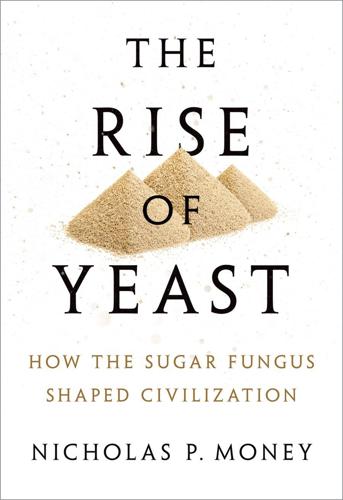
The Rise of Yeast: How the Sugar Fungus Shaped Civilisation
by
Nicholas P. Money
Published 22 Feb 2018
The latex that exudes from the scored seed heads of the poppy, as well as the whole plant minus the seeds, is used by the pharmaceutical industry to extract a range of natural opiates, including codeine and thebaine. Codeine is a relatively mild painkiller, good for some types of headache and effective as a cough suppressant. Thebaine has the opposite effect of morphine, acting as a stimulant rather than a narcotic, and is the precursor of oxycodone, marketed as OxyContin in the United States. Oxycodone is prescribed as a more powerful analgesic, or painkiller, than codeine. The problem with this medicine is that it can be highly addictive and, in some cases, cause as much misery as heroin. Wild Saccharomyces does not make any of these compounds. If it had acquired the trick of making opiates in its evolutionary past, palm wine drinkers would have bathed their nerve endings in such tranquilizing spirits that early Homo sapiens would have sleepwalked itself into the fossil record.32 The biochemical pathway for making opiates is considerably more complicated than alcoholic fermentation.
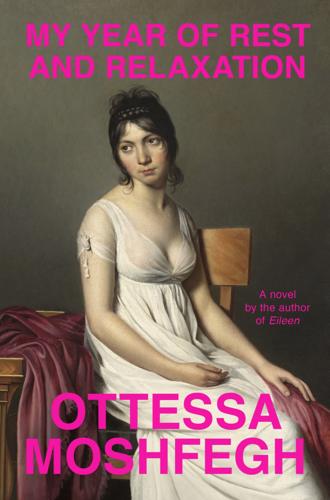
My Year of Rest and Relaxation: A Novel
by
Ottessa Moshfegh
Published 9 Jul 2018
Tuttle smirked and adjusted her glasses. “How did you achieve that, metaphorically speaking?” I racked my mind. “I crushed oxycodone into her vodka.” “That would do it,” Dr. Tuttle said, scribbling maniacally with a ballpoint pen to get the ink flowing. I couldn’t watch. Dr. Tuttle had never been so irritating. I closed my eyes. It was true that my father had kept a white marble mortar and pestle in his study—an antique. I tried to imagine taking a leftover bottle of his oxycodone and crushing the pills in there. I could see my hands grinding, then spooning the white powder into one of my mother’s frosty bottles of Belvedere.
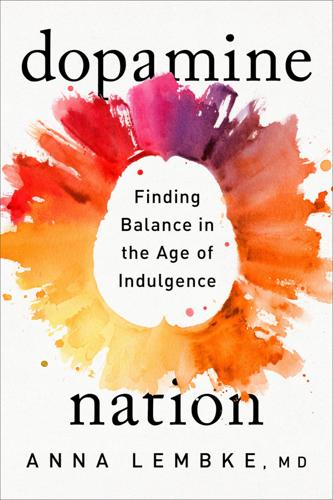
Dopamine Nation: Finding Balance in the Age of Indulgence
by
Anna Lembke
Published 24 Aug 2021
In an attempt to find a less addictive opioid painkiller to replace morphine, chemists came up with a brand-new compound, which they named “heroin” for heroisch, the German word for “courageous.” Heroin turned out to be two to five times more potent than morphine and gave way to the narcomania of the early 1900s. Today, potent pharmaceutical-grade opioids such as oxycodone, hydrocodone, and hydromorphone are available in every imaginable form: pills, injection, patch, nasal spray. In 2014, a middle-aged patient walked into my office sucking on a bright red fentanyl lollipop. Fentanyl, a synthetic opioid, is fifty to one hundred times more potent than morphine. Beyond opioids, many other drugs are also more potent today than in yesteryear.
…
See cigarettes and nicotine Nietzsche, Friedrich, 157 norepinephrine, 142–43, 150 North America, 45 nucleus accumbens, 49, 49 NXIVM, 223 obesity and overweight, 29, 99–100 objectives in DOPAMINE framework, 73–74 Odysseus (Homer), 93, 176 Ohe, Christina G. von der, 143 Opana, 22 opioids ability to permanently change brain, 63 addiction risks associated with, 21 and buprenorphine, 119 cautions about dopamine fasts, 79 clients’ experiences with, 124–25 epidemic, 18–19 and naltrexone as means of self-binding, 96 overdoses of, 39 pain worsened by, 55, 130 pleasure-pain balance reset caused by, 55 potency of, 21 prescribed to the poor, 134 prevalence of prescriptions for, 39 and recovery from surgery, 38 and shrinking of temporal horizons, 103–4 and tolerance (neuroadaptation), 55 and willingness to help others, 184 See also specific drugs, including heroin opponent-process theory, 52–53 optogenetics, 64 overtraining syndrome, 167 oxycodone, 21 OxyContin, 18, 22, 131 oxytocin, 183–84 pain addiction to, 160–68, 234 capacity to tolerate, 66 chronic, 55, 65, 131, 154–55 decreased sensitivity to, 145 and dogs’ responses to electrical shocks, 145–47 effects of abundance on experience of, 67 embracing (see “pain side, pressing the”) emotional, 83–84 growing incidence of physical, 45 heart rate following exposure to, 146, 147, 148 and hedonic set point, 145 intolerance of mild forms of, 40 naltrexone in treatment of, 154–55 neural processing of, 2 opioids’ worsening of, 55, 130 paradigm shift around, 38–39 perception of, 65–66 pleasure experienced with, 65 pursuit of pleasure as source of, 66–68, 234 and tolerance of pain medications, 55 widespread prevalence of, 44–46 See also pleasure-pain balance “pain side, pressing the” and addiction to pain, 160–68 cold therapy, 140–44, 169–70 and dopamine deficit state, 167 and exercise, 150–52 and exposure therapy, 156–59 and extreme sports, 165–67 and homeostatic mechanisms, 143–44 and hormesis, 148–52 and increased tolerance to fear, 159–60 and intermittent fasting, 149–50 resetting balance to pleasure side, 144–48, 234 as treatment for pain, 153–60 and work addiction, 168–69 parenting insulating children from adversity, 35–37 and parents with addictions, 20 and prosocial shame, 224–29 and teaching honesty, 204, 224–27 Pascoli, Vincent, 64 Pavlov, Ivan, 58 Pavlovian (classical) conditioning, 58–62 Paxil, 32 PCP, 22 people, places, and things as cues, 58 Percocet, 22 pharmaceutical industry, 128 pharmacotherapy, 96–97, 153.

What Doctors Feel: How Emotions Affect the Practice of Medicine
by
Danielle Ofri
Published 3 Jun 2013
The ETOH-WD patients are typically surly, smelly, and demanding. Nearly all of them march right out of the hospital to their next drink and then get readmitted two weeks later. Many of these patients sport records of multi-city tours of rehabs, all of which seem to have amounted to nothing. Quite a few are skilled manipulators for oxycodone and Valium. Many have managed to obtain public assistance or disability but appear to do nothing but drink or take drugs. It is easy for doctors—who usually approach life with a pull-yourself-up-by-your-own-bootstraps attitude—to become resentful and disgusted by these seemingly parasitic, self-serving moochers.
…
It is easy for doctors—who usually approach life with a pull-yourself-up-by-your-own-bootstraps attitude—to become resentful and disgusted by these seemingly parasitic, self-serving moochers. John Carello was one such patient I took care of several years ago. The resident on my team announced our new admission by drily stating that this was Mr. Carello’s fifty-seventh admission to Bellevue Hospital. Every admission was for either overdose or withdrawal from opiates—heroin or oxycodone. Today was an overdose, and the official treatment plan consisted of letting Mr. Carello sleep it off. I scanned the voluminous chart; it looked as though each resident had simply copied the medical history from the prior admission, and it was hard to blame them because nothing really changed from one admission to the next.
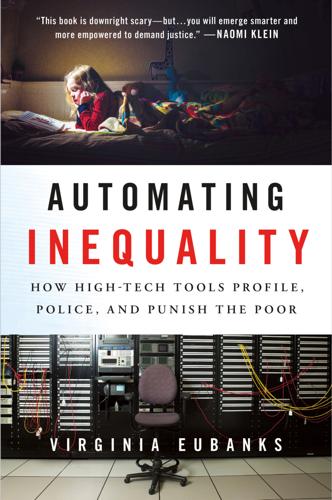
Automating Inequality
by
Virginia Eubanks
But there is good reason to believe that we were targeted for investigation by an algorithm that detects health-care fraud. We presented some of the most common indicators of medical malfeasance: our claims were incurred shortly after the inception of a new policy; many were filed for services rendered late at night; Jason’s prescriptions included controlled substances, such as the oxycodone that helped him manage his pain; we were in an untraditional relationship that could call his status as my dependent into question. The insurance company repeatedly told me that the problem was the result of a technical error, a few missing digits in a database. But that’s the thing about being targeted by an algorithm: you get a sense of a pattern in the digital noise, an electronic eye turned toward you, but you can’t put your finger on exactly what’s amiss.
…
See also welfare rights movement Nationwide Demonstration Project Nazism Needell, Barbara New Deal programs New Poor People’s Campaign New Voices Pittsburgh New York State Board of Charities New Zealand Ministry of Social Development (MSD) Nilles, Ginny Nixon, Richard Noel, Bruce O’Brien, J. C. Occupy Wall Street O’Neil, Cathy Operation Talon Orwell, George outdoor relief oxycodone painkillers panhandling Panic of 1819 Panic of 1873 passbook system (South Africa) pauper’s oath paupers and pauperism. See also poverty Peel, Mark Pennsylvania. See Allegheny County, Pennsylvania Perdue v. Murphy Perot, Ross Personal Responsibility and Work Opportunity Reconciliation Act (PRWORA) Pierce, Matt Piven, Frances Fox policing community policing culture of policy and child welfare digital decision-making as replacement for and economic borderlands and homelessness microtargeting New Deal programs punitive public policy Poor People’s Economic Human Rights Campaign (PPEHRC) poorhouses cadaver dissection “Poorhouse Ring” death rates in and fraud and profiteering as home of last resort integration of legacy of memorializing and “pauper problem” physical conditions of poor farms Rensselaer County House of Industry See also digital poorhouse; poverty Potts, Monica poverty as borderland criminalization of and cultural denial denial of “deserving” and “undeserving” poor and Great Railroad Strike of 1877 line as majority experience in America over life course and parenting paupers and pauperism political and media portrayals of statistics See also digital poorhouse; poorhouses poverty profiling predictive analytics predictive risk models and call screening and constitutional rights and human bias and human vs. automated discretion outcome variables predictive variables proxies risk for everyone validation data See also Allegheny Family Screening Tool (AFST) pre-empting politics Priddy, Albert prioritization in homeless services privacy and class data and eligibility rules and homelessness and King v.
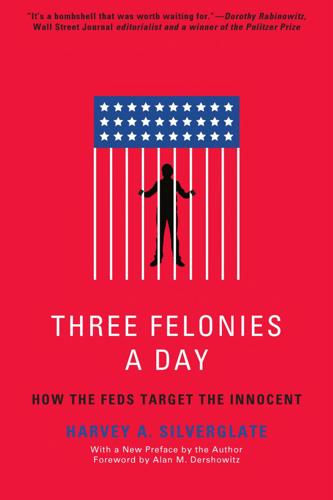
Three Felonies a Day: How the Feds Target the Innocent
by
Harvey Silverglate
Published 6 Jun 2011
Title II of the 1970 Act (dubbed the Controlled Substances Act) classified drugs by weighing their potential for harm against their therapeutic benefits. Drugs such as marijuana and heroin, with no officially recognized therapeutic use but with a perceived high potential for addiction or other abuse, were placed in Schedule I. Schedule II listed narcotic and non-narcotic drugs including cocaine, methadone, oxycodone and its time-release formulation known as OxyContin®, as well as a variety of amphetamines and barbiturates that carried what the government deemed a high risk of severe addiction. Analgesics and other drugs with lower risk of addiction filled out Schedules III, IV, and V. The classification of these drugs into categories purportedly balancing therapeutic value against addictive and recreational potential signaled the new, supposedly modern, more scientific approach to federal drug regulation.
…
Hurwitz charged that he had not just stepped, but leapt across the line separating acceptable from unacceptable prescribing practices for the powerful, and effective, analgesic OxyContin®. OxyContin® is an enormously important medication. Placed on the market by the pharmaceutical company Purdue Pharma2 in 1996, OxyContin® is a form of the narcotic drug oxycodone and is a therapeutic improvement over the original because it is released more slowly and steadily into the patient’s system. This “time release” aspect of OxyContin® makes it particularly useful for relieving extreme pain for hours at a time. While other types of pain medication might last only a few hours, orally administered OxyContin® delivers pain relief over 12 hours with a single dose.
…
See USA Patriot Act Operation Rescue, 273–274 Payback (Fischel), 101–102 opinion letters, 139 PCAOB (Public Company Accounting Oversight Board), 151 opioid therapy, 52 OPIS (Offshore Portfolio Investment Strategy), 142 opium, 46 opposition party, vulnerability of to prosecution, 28–29 PEN American Freedom to Write Committee, 236 Pentagon Papers, 197–201, 203 Pepper, Claude, 4–6 Orphan Medical, Inc., 63, 65–66 perjury Cintolo and, 168 Collatos and, 16 Finneran and, 36–41, 44 Stewart, Martha, and, 117 Oscoda Air Base, xxxiii perjury traps, 38 over-the-counter anti-inflammatory medicines, 57–58 Petrolati, Thomas M., 33–34, 40 Oregon Death with Dignity Act (ODWDA) 1994, 59–63 Owen, Richard, 110–112 Pfeiffer, Sacha, 214–215 Owens, Marcus, 244–245 pharmaceuticals, aggressive promotion by physicians, 66–67 Oxybabies, 50 physician-assisted suicide, 59–63 oxycodone, 47–48 picketing, aggressive, 273–274 OxyContin®, 47–50 Pincus, Walter, 207 Page Six, The New York Post, 190–195 Pain and Policy Studies Group, 51 pain management, medical practice of, 45–59 Plame, Valerie, 207–212 plasmapheresis, 28 plea bargaining about, xliv–xlvi, 268–269 AIG and, 155 332 index Alford and, xlviii–xlix Finneran and, 36, 40 Knox and, 58 Milken, Michael, and, li, 99, 101–102, 105 Russell and, 164–165 Singleton and, xlvii–xlix Stern, Jared Paul, and, 193 See also witness cooperation PMA (pre-market approval) application, 78–79 pro bono publico representation, 266–267 The Progressive, 205–207 Progressive, Inc., Erwin Knoll, Samuel Day, Jr., and Howard Moreland, United States of America v., 205–207 pro-jihad publications, 243 Pro-Life Action League, 274 prosecution, selective, 28–29 politicization of prosecutors, xxxi prosecutorial zeal, excessive, Jackson on, xxxv–xxxvi Ponsor, Michael, 33, 258, 260 prosecutors, politicization of, xxxi pornography, child, possession of, li, 159–166 protection racket, 191 Portenoy, Russell K., 54–55 Public Company Accounting Oversight Board (PCAOB), 151 post-publication prosecution, 196, 198–199 public sector extortion, 8–9 Powell, Lewis, 204–205, 208 Putin, Vladimir, xxiii powers balance of, 11, 37, 189, 266–267 separation of, 183, 265–267 qualified privilege, 208 Powers, Francis Gary, 219 qui tam law, 88 Puritanism, 49 Quattrone, Frank P., 106–114 pregabalin, 64 pre-market approval (PMA) application, 78–79 Racketeer-Influenced Corrupt Organization (RICO) law, 30, 273 PRESCRIPTION PAIN MEDICATIONS: Frequently Asked Questions and Answers for Health Care Professionals, and Law Enforcement Personnel, 51–52, 59 racketeering, 6, 30, 75, 99, 167, 273 prescriptions, off-label, 63–67 presidential signing statements, 183 the press.
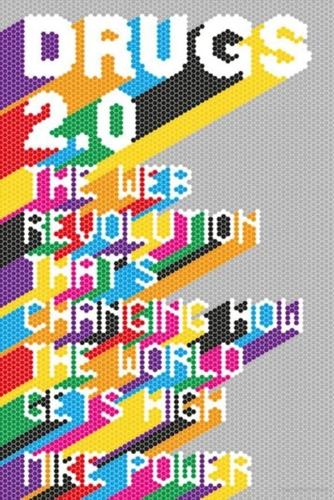
Drugs 2.0: The Web Revolution That's Changing How the World Gets High
by
Mike Power
Published 1 May 2013
‘As a dealer/vendor I get to see a much closer view of these problems, both in myself and others, and frankly it often upsets me. Many times I’ve had to stop selling to clients because they developed serious addiction issues. I know people who use MDMA every week and suffer serious memory and cognitive problems because of it; people who can’t stop using coke despite not even enjoying it any more, people who have to pop Oxycodone just to make it through the day. Seeing it really wears me down. How many more people would there be like that if they could pop down to the convenience store and pick up an eight-ball of cocaine? Would they ultimately be better off if given access to whatever they wanted along with subsidized harm reduction and treatment programmes if needed?
…
D., 1 Lamere, Timothy, 1 Lancet, The, 1 Latvia, 1 Leary, Timothy, 1, 2 Legalhighguides, 1 Leonhart, Michele, 1 Lewman, Andrew, 1, 2 Liberty Gold, 1 Life magazine, 1 lignocaine, 1 Lilly, John, 1 Linder, David, 1 Linnaeus, Carl, 1 Llewellyn, Max, 1 Lloyd, Daniel, 1 London Toxicology Group (LTG), 1, 2 Loomis, Katrina, 1 lotus leaves, 1 Louwagie, Pam, 1 LSD, 1, 2, 3, 4, 5, 6, 7, 8, 9 and bizarre behaviour, 1 and drug myths, 1 online sales, 1, 2, 3, 4 LSD: The Beyond Within, 1 magic mushrooms, 1, 2, 3, 4, 5, 6, 7, 8, 9 and drug laws, 1 Mail on Sunday, 1, 2, 3 Makriyannis, Alexandros, 1 Manchin, Joe, 1 Mancuso, David, 1 Manson, Alasdair, 1 marijuana (cannabis), 1, 2, 3 American policy on, 1 and decriminalization debate, 1, 2 droughts, 1 as gateway drug, 1 ‘grit weed’, 1 and Mexican drugs war, 1 online sales, 1, 2, 3 popularity, 1 reclassification controversy, 1 replacements, 1, 2, 3, 4, 5, 6, 7, 8, 9 Markoff, John, 1 Marquis reagent, 1 Mathewson, Nick, 1 May, Theresa, 1 Mayhew, Christopher, 1, 2 MBZP, 1 MDA, 1, 2, 3 MDAI, 1, 2, 3 MDMA (Ecstasy), 1 and bingeing, 1 and Bluelight community, 1 brain effects, 1 compared with mephedrone, 1, 2 compared with methylone, 1 deaths, 1, 2, 3 decline in quality, 1, 2, 3 and decriminalization debate, 1, 2 global drought, 1, 2, 3, 4 increase in supply, 1 interaction with MAOIs, 1 and internet, 1, 2, 3 introduction to Britain, 1 and mass culture, 1, 2 MDA variant, 1, 2 and mephedrone substitution, 1 ‘molly’, 1 online sales, 1, 2, 3 popularity, 1, 2 popularity in China, 1 prices, 1 and safrole synthesis, 1 synthesis, 1 testing, 1, 2, 3 TMA derivative, 1 use in psychotherapy, 1 MDP-2-P, 1 MDPV, 1, 2, 3, 4, 5 Measham, Fiona, 1 Mendez, Eva, 1 mephedrone (Meow), 1, 2, 3, 4, 5 deaths, 1 and decriminalization debate, 1, 2, 3 increased use, 1, 2, 3 marketing and legislation, 1, 2 popularity, 1 replacements, 1, 2, 3, 4 mescaline, 1, 2, 3, 4, 5, 6, 7, 8, 9 and MDMA, 1, 2, 3 methadone, 1 methamphetamine, see crystal meth methcathinone, 1, 2 methiopropamine, 1, 2 methoxetamine (MXE; 3-MeO-2-Oxo-PCE), 1, 2, 3, 4, 5 methylone, see BK-MDMA methylsafrylamin, 1 Mexican drugs war, 1, 2 Miami zombie cannibal case, 1 Milne, Hugh, 1 MixMag survey, 1, 2, 3 mod culture, 1 monoamine oxidase inhibitors (MAOIs), 1 Moore, Demi, 1 morning glory seeds, 1 morphine, 1, 2 Morris, Hamilton, 1 Morse, Samuel, 1 Mother of All Demos, 1 mreah prew phnom tree, 1 MtGox, 1 Mulholland, John, 1 MySpace, 1 Nakamoto, Satoshi, 1 naphyrone, see NRG-1 Nasmyth, Peter, 1 National Security Agency (NSA), 1 Native Americans, 1 NatWest, 1 NBC Dateline, 1 needle exchange programmes, 1 Negron, Senator Joe, 1 NeoDoves, 1, 2, 3, 4 Netherlands (Holland), 1, 2, 3, 4, 5, 6, 7 and magic mushrooms, 1 and PMK-glycidate, 1 N-ethyl ketamine, 1 neurotransmitters, 1, 2 see also dopamine; serotonin New Orleans Times Picayune, 1 New York Times, 1, 2 New Yorker, 1 New Zealand, 1 Nichols, David E., 1, 2, 3, 4, 5, 6 Niemoller, Mark, 1 nitrous oxide, 1 Nixon, Richard, 1, 2 non-steroidal anti-inflammatories (NSAIDs), 1 nootropics, 1 norephrenine, 1 norketamine, 1, 2 Norris, Charles, 1 NRG-1 and NRG-2, 1 nuclear magnetic resonance, 1, 2, 3 nutmeg, 1 Nutt, David, 1 Obama, Barack, 1, 2, 3, 4 Operation Adam Bomb, 1 Operation Ismene, 1, 2, 3 Operation Kitley, 1 Operation Pipe Dream, 1 Operation Web Tryp, 1, 2, 3, 4, 5, 6, 7, 8 opium, 1 O’Reilly, Tim, 1 organized crime, 1, 2, 3 Orthopedics, 1 Osmond, Humphrey Fortescue, 1, 2, 3 Otwell, Clayton, 1 Oxycodone, 1 packet-switching, 1, 2 Panorama, 1 paracetamol, 1 Parkinson’s, 1 Parry, Simon, 1 party pills, 1 PayPal, 1, 2, 3, 4 Payza, 1 Pecunix, 1 pentylone, 1, 2 pesticides/herbicides, 1, 2 peyote, 1, 2, 3, 4, 5 pharmacokinetics, 1 phenazepam, 1 phenethylamines, 1, 2, 3, 4, 5, 6, 7, 8, 9, 10 Pillreports.com, 1 Pink Floyd, 1 piperazines, 1, 2, 3, 4, 5 piperidines, 1 piperonal, 1 piracetam, 1 Platt, Lord, 1 PMA, 1, 2 PMK, 1 Poland, 1, 2 Poppo, Ronald, 1 Portugal, 1 potassium permanganate, 1 Preisler, Steve (Uncle Fester), 1, 2 Price, Gabrielle, 1 Princess Bride, The, 1 Project MKultra, 1 Prozac, 1, 2 psilocin, 1, 2 Psilocybe cubensis, 1 Psilocybe semilanceata (liberty caps), 1 psilocybin, 1, 2, 3, 4, 5 see also magic mushrooms psychiatric patients, treated with LSD, 1 Punch, 1 punks, 1 Pursat, 1 QR codes, 1 Quick Kill, 1 Rachmaninov, Sergei, 1, 2 Ramsey, John, 1, 2, 3, 4, 5, 6 Reding, Viviane, 1 Register, The, 1 Reid, Brian, 1 Reid, Fergal, 1 Research Chemical Mailing List (RCML), 1 research chemicals, 1 arrival of legal highs, 1 custom syntheses, 1, 2 growth in availability, 1 and law enforcement, 1 new compounds statistics, 1 online sales, 1 overdoses and mislabelling, 1, 2, 3 and retail market, 1 and substance displacement, 1 users, 1 Reynolds, Simon, 1 ring substitution, 1, 2, 3, 4, 5, 6, 7, 8 Ritalin, 1 Robbins, Joshua, 1 Robinson-Davis, Trevor, 1 Rolling Stone, 1 Russia, 1 Ryan, Mark, 1 Sabag, Doron, 1 Sabet, Kevin, 1 safrole, 1, 2, 3, 4 salmonella, 1 Saltoun, Lord, 1 Salvia divinorum, 1, 2 Sandison, Ronald, 1 sannyasin, 1 Santos, Juan Manuel, 1 sapo, 1 sarin, 1 Saunders, Nicholas, 1, 2 Saunders, Rene, 1 Schumer, Senator Charles, 1 sclerotia (truffles), 1 scopolamine, 1 Scroggins, Justin Steven, 1 Second World War, 1 Serious Organised Crime Agency (SOCA), 1, 2, 3 serotonin, 1, 2, 3, 4, 5, 6, 7 serotonin syndrome, 1, 2 Shafer, Jack, 1 Shamen, the, 1 Shanghai, 1, 2, 3, 4, 5 Shen-Nung, Emperor, 1 Shepton Mallet, 1, 2 Shulgin, Alexander creation of MDMA, 1, 2, 3, 4 creation of methylone, 1 and drug legislation, 1 internet presence, 1 PIHKAL and TIHKAL, 1, 2, 3, 4, 5, 6, 7, 8, 9, 10, 11, 12, 13 and sex, 1, 2 The Shulgin Index, 1 Shulgin, Ann, 1 Shultes, Richard Evans, 1 Silk Road, 1, 2, 3, 4, 5, 6, 7, 8 SKUNK!
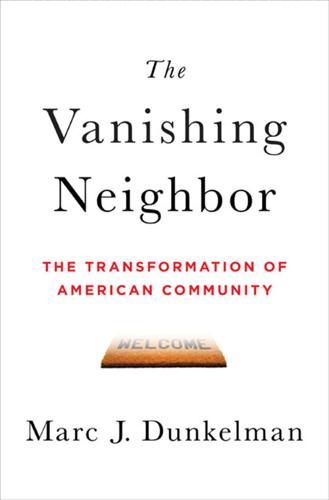
The Vanishing Neighbor: The Transformation of American Community
by
Marc J. Dunkelman
Published 3 Aug 2014
Those of us who prefer certain types of cars, architectural styles, particular modes of worship, and brands of political leadership are sorting ourselves into more homogenous communities. Suburbs that once comprised a whole range of people—different religions, professions, and ethnicities (if not races)—have become increasingly monolithic. Moreover, Bishop discovered, our more perfectly sorted neighborhoods are less and less interconnected. When, for example, an Oxycodone epidemic ran through a section of eastern Kentucky, Federal Express chose to suspend deliveries of prescriptions for fear that trucks might be attacked by groups of addicts.16 But the crisis in that corner of the state was hardly noticed elsewhere, because Harlan County was so dissociated from the communities nearby.
…
Joseph, 24 McCarthyism, 4 McGrath, Charles, 5–6 McLuhan, Marshall, 16, 141, 142 macro level vs. micro level, 9–11, 40–41 Madison, James, 82, 139 magazines, 36, 37, 71 Making a New Deal (Cohen), 203 Manchester, 166–67 Mandelbaum, Michael, 141–42 Man in the Gray Flannel Suit, The (Wilson), 4 manufacturing, 15, 18, 19, 53, 166, 170–71 marriage, 28–31, 68–71, 74, 101, 147, 219 gay, 42, 50, 69 interracial, 68 Marsden, Peter, 119–20 marshmallow test, 214–15, 216, 218, 219, 222 Marty, Martin, 238 Mary Mac’s Tea Room, 136–37 Maslow, Abraham, 61–62, 66, 114, 126, 138 Massey, Doug, 40–41, 43 mass market, 15, 40 Master of the Senate (Caro), 187 matchmaking services, 69–70 materialism, material concerns, 41, 55, 70, 85 Meals on Wheels, 208, 209 Meaney, Michael, 223 media, 184, 186, 187–88 expansion of, 35–37 Medicaid, 201, 203–4 Medicare, xv, 198, 199, 201–30 Medici effect, 163–74, 176, 219 as “valuable inefficiency,” 168 medicine, 31, 58–59, 197, 199–200, 207–8, 229 Mexico, 197–98 Miami Heat, 8–9, 11 middle, failure to understand, 9–11 middle class, 28, 50, 54, 55, 58, 60, 128, 139, 144, 178, 191, 222, 225, 227, 238–39 gentrification and, 56 income inequality and, 22–23 in 1950s, 3–4 middle-ring relationships, xvii, 94, 97–98, 100, 109, 131, 134–38, 150, 169, 174, 193, 218, 219, 232, 233–34 global village and, 142–43 health care and, 201, 202, 204, 208, 210 social capital removed from, 113–26, 129, 138–39, 143, 145, 148, 189–90, 208, 213, 239 trust and, 134, 135 migrations, U.S. defined by, 82–83 militaries, 94, 217 Miller, Conrad, 179–81 Mischel, Walter, 214–16 mobility, 17, 21–26 physical, 24–25, 39–40, 104, 105 social, 21–24, 26, 226 Moffit, Terrie, 215 money, xvi, xvii, 54, 75, 100, 187 Morrison, Toni, 79–80, 135 mother(s), 12, 106, 130–31 of author, 133, 134 motive, 12–13, 49, 51, 59, 62, 73, 74, 75, 98, 212, 213 MSNBC, 184, 187–88 multistrandedness, 96 Mumford, Lewis, 31–32, 82–83, 201 Murray, Charles, 45, 48, 142, 144, 191, 238, 250n Murray Hill, N.J., 164 names, remembering, 91–92 narcissism, 73, 111 National Institutes of Health, 203–4 needs, 71, 195 basic, 61, 62, 67–68 hierarchy of, 61–62, 66, 70, 72, 75, 101, 114, 126, 138 neighborhoods, 22, 24, 74, 79–87, 99, 101, 110, 117, 127, 129, 139, 142, 145–51, 153, 166, 168, 171–72, 189–90, 194, 213, 232, 236, 239 Chinatown Bus effect and, 46–49 collective efficacy of, 149–51 gentrification of, 56 health care and, 201, 210 social isolation in, 118–19 neighborliness, 130, 142, 144, 195 networked community, 143–53, 168–76, 191, 194–95, 217, 235–41 health care and, 210–11 networked individualism, 111 network theory, 95 New Deal, 201, 203, 210, 230 New England, xii, 81 news, 74, 184, 186, 187–88, 194 access to, 18, 20, 35–36 newspapers, 18, 24–25, 35–36, 148, 152, 188 New York, N.Y., 19, 84, 128, 176, 230 Chinatown in, 33–35 Diamond District in, 98–99, 135 Jacobs’s views on, 85–86, 166, 167–68 New York Times, xiv, 27, 38, 46, 54–55, 59, 182, 229 New York Times Book Review, 5–6 New York Times Magazine, 64 niches, 36, 40, 41, 44–45, 73–74 affirmation and, 107–8, 110–11 Nichols, Mike, 4, 248n Nie, Norman, 125 1950s, 3–6, 32, 50, 52, 60, 114, 115, 127, 138, 139, 248n conformity in, 4–5, 65, 73, 74 family routines in, 58 fantasy view of, 3, 51 membership associations in, 130–31 1960s, 70–71, 248n social trust in, 135 upheavals of, 6, 68, 87, 108–9, 128 Nisbet, Robert, 194 North American Free Trade Agreement, 197–98 nostalgia, ix–x, 51, 72, 146, 182–83 nuclear war, 51, 52, 55, 56, 57, 60 nursing homes, 197, 200, 202, 206–7 Obama, Barack, 24, 37–38, 42, 59, 146, 186, 205, 210 Occupy movement, 109–10 Office, The (TV show), 131 Ogle, Richard, 162 Olds, Jacqueline, 130 Olympic Games (2014), 178 online buying, 41, 69–70 online communities, 114–15, 116, 145, 250n opportunity, 12–13, 26, 27, 32, 43, 49, 62, 69, 73, 74, 75, 98, 212, 213 affirmation and, 103, 108 optimism, 51, 82, 114, 236 Organization Man, The (Whyte), 5, 6, 138 organizations: new breed of, 116–18 voluntary, 80, 116, 118, 130–31, 187, 201, 228, 239 Osteen, Joel, 72, 238 other-directedness, 5–7 Our Best Life (Osteen), 72 outer-ring relationships, 96–97, 114–19, 137, 138–39, 143, 145, 147–48, 169, 173, 190, 204, 237, 238 affirmation and, 107–12, 115 online, 114–15, 121–22 Oxycodone epidemic, 147–48 Packer, George, 235, 236 Palin, Sarah, 206 Pariser, Eli, 37, 48, 176, 194–95 Park Forest, 4–5 Pasteur, Louis, 158–59, 174 Pauling, Linus, 161 PBS, 182, 192 pensions, 20, 205, 235–36 Perot, Ross, 197–98 Perry Preschool Project, 224 Pew Center for American Life, 250n Pew Forum on Religion and Public Life, 71 Pew Internet & American Life Project, 125 Pew Research Center, 106–7, 237 Pixar studio, 164–65 Planet Money (radio show), 180–81 Platinum Mile, 176 polio, 51, 52, 59 political science, 66–69, 141 politics, xiv–xvii, xix, 11, 15, 82, 101, 148, 181–95, 210, 229, 232 affirmation and, 108–10 Chinatown Bus effect and, 44, 47–48 culture wars and, 114 globalization and, 18 taste and, 37–38 polls, polling, 7, 29, 182, 226 deliberative, 192–93, 195 World Values Survey, 67–68, 73 Poole, Keith, 184 Porter, Eduardo, 255n potlikker, 136–37 poverty, 11, 22, 41, 43, 54, 62, 75, 146, 194, 201, 226, 255n in Brazil, 178, 267n urbanism and, 83, 216 prejudice, 88, 146, 148, 231 against homosexuals, 42, 43, 51 racial, 24, 39, 146 productivity, 19, 53, 167 progress, 24, 31, 35, 68, 75, 174, 238 progressives (the left), 11, 15, 23, 26, 31, 47, 148, 235 crime and, 56 Washington dysfunction and, 182, 184, 189, 190 property, 82, 179, 229 prosperity, 52–55, 57, 62, 67, 68–69, 72, 178, 230 psychology, Maslow’s influence in, 61–62 public policy, failure of, 22–23 Pulitzer, Joseph, 188 purchasing power, 53–54 Putnam, Robert, 7, 97, 99–100, 113–16, 119, 120, 141, 151–52, 170, 192 on social trust, 134–35 quality of life, 21, 50–62 affluence and, 52–55, 62, 72 health and, 31, 51, 52, 57–60 hierarchy of needs and, 61–62, 72 security and safety and, 52, 55–62, 72 Quest for Community, The (Nisbet), 194 race, 11, 32, 68, 79, 147, 148, 237 prejudice and, 24, 39, 146 see also African Americans racism, 4, 51 Radicalism of the American Revolution, The (Wood), xii, 81, 194 radio, 36, 37, 71, 133, 148, 152, 180–81 Rainie, Lee, 237 Rauch, Jonathan, 199 Raytheon, 165 Reagan, Ronald, 22 Real World, The (TV show), 63 rebels, 102–3, 127 religion, 29, 39, 48, 71–72, 74, 114, 147, 148, 231, 238 Republicans, 15, 37–38, 148, 182–85 retirement, 55, 60, 104–5, 197, 198, 204–5, 235–36 Riesman, David, 5–8, 12, 65, 73, 74, 213 Rock, Chris, 40 romance, 70, 71, 74 Romney, Mitt, 37–38 Roosevelt, Franklin D., 203 Rose, Charlie, 182 Rosenthal, Howard, 184 Rotary Clubs, 44, 45, 116 Rumspringa, 28–29, 30 Sachar, Abram L., 4 Saddleback Church, 72 Safford, Sean, xi, 97, 169–72 Sampson, Robert, 149–50 San Francisco, Calif., 129, 189 Santayana, George, 51 Saturn model, 95–98 see also intimate relationships; middle-ring relationships; outer-ring relationships Schmidt, Eric, 18 Schwartz, Richard, 130 Second Wave society, 16–17, 20, 23, 31–32, 48 mass market and, 40 membership organizations and, 44 townships in, 88, 89, 233 security and safety, 52, 55–62, 67, 68, 72, 133, 150 segregation, 40–41, 79, 237–38 self-actualization, 61, 72 self-control, 214–25 self-expression, 69, 71–72 self-fulfillment, 104, 261n self-interest, 183, 195 Senate, U.S., xvi, 184, 185, 186, 188, 191 service jobs, 18–19, 53, 132, 138, 236 settled horticultural societies, 92, 95 shopping, 25, 38–42, 49 shopping malls, 40, 41 Silicon Valley, 174, 175, 227, 237 Silver, Nate, 7 Skocpol, Theda, 44, 45, 116–18, 130, 201 smallpox, 157–58 social architecture, 232–34 in Barbados vs.

The Survival of the City: Human Flourishing in an Age of Isolation
by
Edward Glaeser
and
David Cutler
Published 14 Sep 2021
The Coming of OxyContin In 1995, Purdue Pharma received approval to sell OxyContin, the latest supposedly low-risk opioid. OxyContin’s alleged safety came from two features. First, the drug had a time-release “Contin” system that would moderate the size of the dose and consequently the degree of dependence. Second, OxyContin used oxycodone, which had less of a history of abuse in the US. The fondness of prominent Nazis for oxycodone had perhaps reduced its appeal in America. Before telling the OxyContin story, we must note that one of us (Cutler) has been involved as an expert witness on behalf of counties and states in litigation against opioid manufacturers, distributors, and dispensers.
…
In a 1998 video, a doctor argues that opioids “should be used much more than they are for patients in pain” because “in fact, the rate of addiction among pain patients who are treated by doctors is much less than one percent.” The alleged safety of OxyContin was proved to be a lie in less than five years. Users started crushing time-release tablets to get the full dose of oxycodone at once. As the number of pills increased, so did the number of fatalities. The death rate from drug overdoses in the US rose from below 5 per 100,000 in 1990, despite the crack epidemic, to over 15 per 100,000 in 2015. This new drug wave was entirely legal. Thus, the urban drug market was somewhat less important—though it did smooth the flow from those with prescriptions to those without.

Memoirs of an Addicted Brain: A Neuroscientist Examines His Former Life on Drugs
by
Marc Lewis Phd
Published 5 Mar 2013
The only thing I remember distinctly from that period is the Percodan. Those big yellow pills, two every four or five hours. They took care of the pain. They also gave me a glow of pleasure I had not felt since my adventures with Jimmy. By the second week of recovery, my need for the Percodan was wearing off, but my appetite for it was growing. Oxycodone, the main ingredient, is a potent “semi-synthetic” opiate. A polished version of a heroin high—milder, to be sure, but also smoother at the edges, thanks to the wonders of modern chemistry. I began to save pills throughout the day so that I could have something of a rush when I took them in the late afternoon or early evening and then enjoy a well-orchestrated fadeout into dreamland at ten o’clock.
…
See Orbitofrontal cortex Opiates external living without semi-synthetic sedation from source of using Opioid receptors Opioids depletion dopamine and evolution of hypothalamus and internal security and using Opium addiction to raw refined using Orang Asli Orange wedge Orbitofrontal cortex (OFC) amygdala and changes in craving and dopamine and feedback loops and glutamate and interpretation by ventral striatum and ventral tegmental area (VTA) and work of Orbitofrontal neurons Orbitostriatal circuits Outer world, exploring Overdosing Oxycodone Pain caring for feeling medications for Panic Paraphernalia affection for possession of Parkinson’s disease, dopamine and Paxil PCP. See Phencyclidine Peace Corps Penny Saver supermarket, shopping trips to People’s Park Peptides Perception Percodan Perry Peters, Dr. Phencyclidine (PCP) throbbing of taking Plasticity Pleasure Police arrest bydemonstrations and encounter with fear of forgetting about hippies and Peoples’ Park and Pond House Prefrontal cortex changes in dorsal-lateral work of Prescriptions, forging of Probation Probation officer, visiting with Prostitute, night with Prozac Psilocin Psilocybin Psychedelics destructive power of fascination with Psychotherapy Psychotics Psychotropics Puerto Rico fantasy Pumpkin described Jim and marriage of overdosing and PCP and Ralph and Purple Haze Purples Racist asshole, accusations as Ralph described heroin and Jim and marriage of mental institution for overdosing and PCP and Pumpkin and Rapid eye movement (REM) Rats experimenting on Reagan, Ronald Reality access to coming back to meaning and turbulent flow of Receptors heroin and opioids and Recovery Red rock, smoking Reds teasing by Remorse Restlessness Reward Rice, Anne Romilar, abusing Roy, Hiren Sadness learning about Safety San Francisco living in Schizophrenia Schwartz, Joe arrest and switching schools and Seconal.
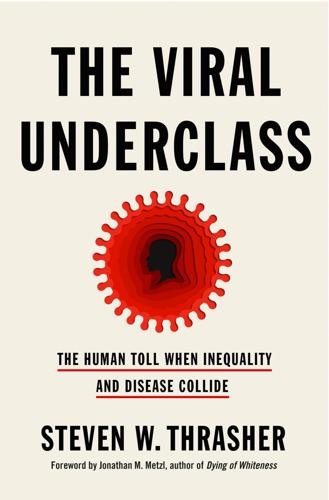
The Viral Underclass: The Human Toll When Inequality and Disease Collide
by
Steven W. Thrasher
Published 1 Aug 2022
This guaranteed that the care work sites of the present would be much harder to unionize than the mine shafts of the past. West Virginia laborers who did physical work did get pain prescriptions for work-related injuries. But by the twenty-first century, that work was more likely in informal construction jobs or as day laborers. Sometimes injured workers found that OxyContin, the brand name for an opioid called oxycodone, or more powerful opioids like fentanyl kept their pain at bay. But more than that, economic precarity coupled with depression and other mental distress created fertile ground for addiction to flourish. Many workers found that the opioids didn’t relieve only physical pain; the comforting euphoria also helped them cope with the emotional conditions that austerity had created: alienation and depression.
…
National Institute of Allergy and Infectious Diseases (NIAID) nationalism National Junior College Athletic Association Wrestling Championships National Park Service Native Americans nativism Nature Nazi Germany Nebraska necropolitics neoliberalism New Deal New Democrats New Jersey “new Jim Crow” New Orleans New Republic Newsom, Gavin New York City New York City Council New Yorker New York Police Department (NYPD) 85 New York Post New York State New York State Senate New York Times Magazine Nguyen, Kimarlee Nixon, Jay norovirus Norplant North Carolina Nott, Josiah Clark nursing homes Oakland Obama, Barack Ocasio-Cortez, Alexandria Occupational Safety and Health Administration (OSHA) Ohio OKCupid Olivarius, Kathryn Onassis, Aristotle Onassis, Jacqueline Kennedy On the Origin of Species (Darwin) opioid crisis organized abandonment othering overdoses ownership mentality Oxfam International OxyContin (oxycodone) Palestinians Parasite (film) parasites, defined Paris Paris Is Burning (film) Pasteur, Louis Patel, Rupa Pathogen Research Database Patient 31 Patient O (“outside”) patient zero “Patient Zero”. See also Gaëtan Dugas. Patient Zero and the Making of the AIDS Epidemic (McKay) Patrick, Dan Patterson, Akil Pence, Mike Peoples, Angela pepper spray Perdue, Michelle Perotti, Roberto Personal Responsibility and Work Opportunity Reconciliation Act (welfare reform, 1996) Petro, Anthony Pfoutz, Charles pharmaceutical industry Philippines Philpot, Tim Pirandello, Luigi Pirtle, Whitney plague Polanco, Layleen police police dogs (K9s) polio vaccine poliovirus Political Stencil pork industry Pose (TV show) Positive Voice Postal Service poverty preexisting conditions PrEP (pre-exposure prophylaxis) Pride, David prison abolition movement Prison Policy Initiative prisons.
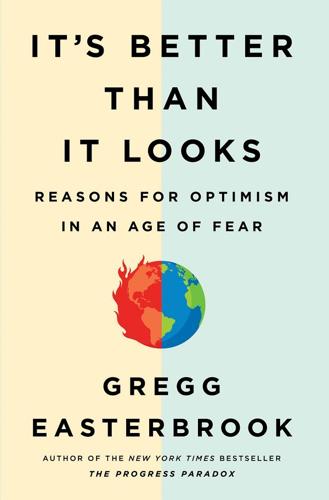
It's Better Than It Looks: Reasons for Optimism in an Age of Fear
by
Gregg Easterbrook
Published 20 Feb 2018
Kids are getting smart about not getting blasted, grown-ups are getting dumb. (Binge drinking at college fraternities and sororities is bad, but same-age Americans not enrolled in school are more likely to abuse alcohol than college students.) The CDC reports, “ Deaths from prescription drugs like oxycodone, hydrocodone and methadone have more than quadrupled since 1999.” Yet government spares no expense, and imposes long prison sentences, to oppose marijuana, which can replace narcotic painkillers at a fraction of the addiction and overdose risk, even as government looks the other way on prescription opioids and their marketing.
…
In 2002, Vaupel published an influential article: James Vaupel et al., “Broken Limits to Life Expectancy,” Science, May 10, 2002. as Claire McCarthy, a pediatrician at Boston Children’s Hospital, has written: Claire McCarthy, “Teen Drug Use Is Down,” Harvard Health Publications, March 21, 2017. “Deaths from prescription drugs like oxycodone, hydrocodone and methadone”: “Drug Overdose Deaths in the United States Continue to Increase” (Atlanta: Centers for Disease Control and Prevention, December 2016). Princeton University researchers Angus Deaton and Anne Case have shown: Anne Case and Angus Deaton, “Rising Morbidity and Mortality in Midlife Among White Non-Hispanic Americans in the 21st Century,” Proceedings of the National Academy of Sciences, December 8, 2015.

The Job: The Future of Work in the Modern Era
by
Ellen Ruppel Shell
Published 22 Oct 2018
The same year, according to the Hartford Courant, “three Transportation Security Administration officers, two police officers and more than a dozen drug dealers in Florida, New York and Connecticut were charged in a smuggling conspiracy that delivered illegal oxycodone pills from Florida to the Waterbury [Connecticut] area. Authorities said that the TSA officers—two in Florida and one in New York—were paid to help drug couriers move pills and the stacks of cash they generated through airport screening systems.” See Edmund H. Mahony, “TSA Officer Admits Working for Drug Smugglers,” Hartford Courant, April 17, 2012, http://articles.courant.com/2012-04-17/news/hc-tsa-drugs-0418-20120417_1_drug-couriers-move-pills-tsa-officers-oxycodone-pills. Electronic surveillance of employees The market for employee-monitoring software is large and varied.
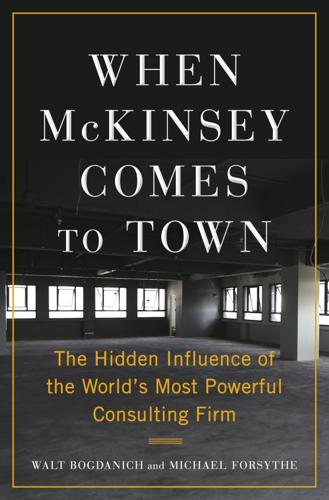
When McKinsey Comes to Town: The Hidden Influence of the World's Most Powerful Consulting Firm
by
Walt Bogdanich
and
Michael Forsythe
Published 3 Oct 2022
Michael Cozzi wrote more opioid scripts than any doctor in the state, eventually leading the state to suspend his medical license. Seeing up to 120 patients per day, Cozzi wrote sixty-four thousand prescriptions for controlled substances in two years. Of those, almost three million dosage units were for oxycodone, the opioid and main ingredient in OxyContin. When patients didn’t have cash, Cozzi accepted guns as payment. In one month, he prescribed controlled substances for 1,700 patients. The sales boom benefited at least one Purdue field rep as well. In 2012, during what the Indiana attorney general called the peak of opioid prescribing, that sales rep ranked first among 525 sales reps nationwide in selling the company’s pain medicine.
…
See sentiment analysis opioids, 26–27, 73–74, 129, 130–48, 280 Optum, 272 Orr, Gordon, 96 Osuna, Roberto, 218–19 Outlander (TV series), 166 outsourcing, 33, 39–43, 50 Oxford University, 114, 150, 155–56, 267, 275 oxycodone, 138 OxyContin, 131–46, 280 overdose rebates, 142 P Pacthod, Daniel, 167–68 Pain Killer (Meier), 133 Palace of the Lost City, 228 Palestinians, 244 Panama, 152 Pan American World Airways, 33 Papua New Guinea, 162 Parker, Hugh, 260–62 Parsons, Andrew John, 114 Passenger Rail Agency of South Africa (PRASA), 229 patient advocacy groups, 141–42 Patton, Arch, 33–34, 42, 46, 50, 198 PDVSA, 156 Pearson, J.
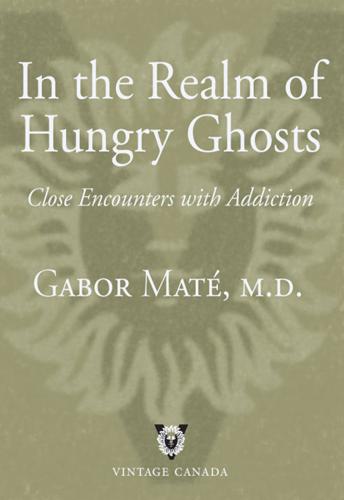
In the Realm of Hungry Ghosts: Close Encounters With Addiction
by
Gabor Mate
and
Peter A. Levine
Published 5 Jan 2010
Aronoff, “Opioids in Chronic Pain Management: Is There a Significant Risk of Addiction?” Current Review of Pain 4(2) (2000): 112–21. 2. A.D. Furlan, “Opioids for Chronic Noncancer Pain: A Meta-analysis of Effectiveness and Side Effects,” CMAJ 174(11) (23 May 2006): 1589–94. 3. S.R. Ytterberg et al., “Codeine and Oxycodone Use in Patients with Chronic Rheumatic Disease Pain,” Arthritis and Rheumatism 14(9) (September 1998): 1603–12. 4. L. Dodes, The Heart of Addiction (New York: HarperCollins, 2002), 73. 5. L. Robins et al., “Narcotic Use in Southeast Asia and Afterward,” Archives of General Psychiatry 23 (1975): 955–61. 6.
…
*2 Infections fester from bacteria injected into the tissues during drug injection and are carried by blood circulation to internal organs like the lungs, liver, heart, spine and brain. Return to text. *3 In popular usage “narcotic” may refer loosely to any illicit drug. In this book, as in medical language, narcotics is a term only for opioid drugs either derived from the Asian poppy, like heroin and morphine, or synthetic, like oxycodone. Return to text. *4 A patient’s report that a stimulant drug like cocaine or crystal meth has a calming effect is virtual confirmation that he or she has ADHD (Attention Deficit Hyperactivity Disorder). See Appendix II. Return to text. *5 Italics mine throughout unless otherwise noted. Return to text

Navel Gazing: True Tales of Bodies, Mostly Mine (But Also My Mom's, Which I Know Sounds Weird)
by
Michael Ian Black
Published 5 Jan 2016
Better to get burnt up than buried alive. Sandy wants a proper burial, though, so they’ve decided that after they’re both gone, Mom’s ashes will be placed in Sandy’s casket. They’ve already picked out their plot, discounted because Sandy works at the synagogue. I ask Mom if I can have her leftover oxycodone when she dies. “Sure,” she says. “Although now that I’m on the pain pump I don’t get prescribed the good stuff.” “I’ll take the pain pump then.” She agrees to leave me the pain pump. I’d always assumed that chronically ill people grow to accept death, the way Martha eventually grew to accept the Portuguese foreign exchange student who shared her bedroom with her when she was fifteen.
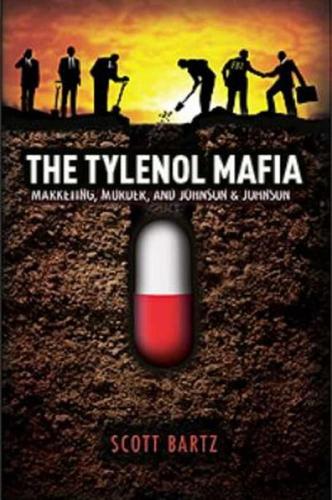
The Tylenol Mafia
by
Scott Bartz
Published 21 Sep 2011
It only had a couple truck bays and made relatively few shipments of J&J products to large third-party wholesalers, repackagers, and distributors. In the 1980s, the McNeil Pharmaceutical plant in Montgomeryville manufactured the prescription analgesics Zomax, Tolectin, and Suprol, and the antipsychotic drug, Haldol. The plant also manufactured Tylox capsules, a painkiller that contains Tylenol and the narcotic, oxycodone. Johnson & Johnson’s Montgomeryville plant thus received bulk containers of Tylenol powder, which McNeil Pharmaceutical then used to manufacture Tylox. The McNeil Pharmaceutical plant in Dorado manufactured Tylenol with Codeine. Non-prescription Tylenol has never been manufactured or bottled at either the Montgomeryville or Dorado plants.
…
The Galveston Daily News, October 11, 1982. In addition to the cyanide: Madrzyk, Anna; Gores, Paul. “Cyanide Killer Search Widens.” The Sunday Herald, October 3, 1982. Acetaminophen is second only: Ionescu, DN; Janssen, JK; Omalu. “Final Diagnosis -- Acute Combined Drug Overdose of Ethanol, Acetaminophen, Imipramine, Desipramine, Oxycodone and Diphenhydramine,” University of Pennsylvania School of Pathology website. Accessed July 20, 2011. http://path.upmc.edu/cases/case407/dx.html On January 13, 1983: “Drug death probes reopened.” The Daily Herald: January 13, 1983 “The defense was saying”: Baden, Michael M. Unnatural Death: Confessions of a Medical Examiner.
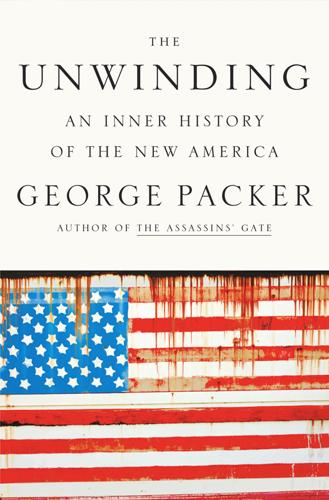
The Unwinding: An Inner History of the New America
by
George Packer
Published 4 Mar 2014
It was the last time he ever lived under his father’s roof. After Dean moved out, his father went into a downward spiral. He took oxycodone pills by the handful, for back pain, headaches, and other real or invented ailments, prescribed by a dozen different doctors who didn’t know about the others. Dean’s mother found pills hidden in his suit pockets, stashed away in garbage bags. They gave his father a vacant look and wore away his stomach lining. He would retreat into his study as if to read one of his religious books, but that was where he’d pop some oxycodone and zone out. He was admitted into rehab several times. Out in the world, Dean went hog wild.

Move Fast and Break Things: How Facebook, Google, and Amazon Cornered Culture and Undermined Democracy
by
Jonathan Taplin
Published 17 Apr 2017
A more blatant display of Google’s power took place after Mississippi attorney general Jim Hood subpoenaed Google in October of 2014 in an effort to determine whether Google was in compliance with the Justice Department settlement the company had entered into in 2011—i.e., whether it was still knowingly profiting from illegal trade. Google had paid a fine of $500 million, which covered the amount that it had profited from the advertising for illegal pharmacies on its search service, plus the amount that the Canadian pharmacies had received from US customers buying illegal drugs. All the oxycodone that was available online through a Google search a few years earlier had been stopped. So General Hood asked for, among other things, the search logs to determine whether Google was sending its customers to other illegal sites, including those selling pirated movies, music, and games. Google, citing the DMCA, said it was protected under federal law and the First Amendment and that the subpoena was an attempt to coerce them into blocking sites that infringe on copyright.
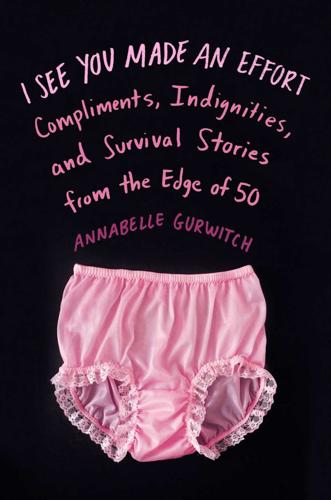
I See You Made an Effort: Compliments, Indignities, and Survival Stories From the Edge of 50
by
Annabelle Gurwitch
Published 6 Mar 2014
“We should really confuse things—let’s put the dog’s paw on the pump!” someone exclaimed. It might have been me—I think it was me, but it was hard to tell; we were giggling and crying and working together as one unit. This is exactly the way I want to go, I said to myself: in a circle of love. By this point she had Paxil, Wellbutrin, morphine, oxycodone and Haldol in her system and still she was totally lucid. “You’re incredibly drug resistant,” someone said. “You should have done heroin!” Okay, I said that. Her first job out of college had been as a page on Saturday Night Live, working with some of the great drug addicts of all time. Oh, the parties she’d excused herself from.
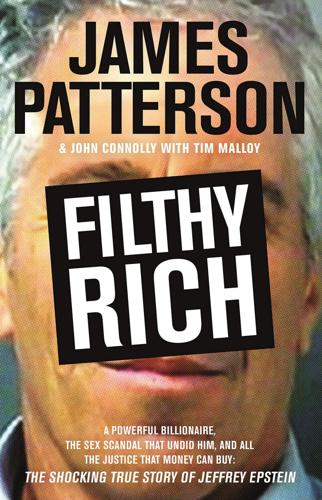
Filthy Rich: A Powerful Billionaire, the Sex Scandal That Undid Him, and All the Justice That Money Can Buy: The Shocking True Story of Jeffrey Epstein
by
James Patterson
,
John Connolly
and
Tim Malloy
Published 10 Oct 2016
During the course of his long career, which began in 1970 with a three-year stint in the district attorney’s office in Brooklyn, he received a number of awards: the pro bono award from the Legal Aid Society of Palm Beach County for his service with the juvenile justice system and for his work with the child protection team; the Peace at Home award, presented by Governor Jeb Bush, for his work with victims of family violence; a lifetime achievement award from the Florida Bar. He was a board member of the National District Attorneys Association. And he was not necessarily averse to going after the rich and powerful. In 2003, he launched an investigation into Rush Limbaugh’s use of, and means of obtaining, oxycodone and hydrocodone. (A few years after Limbaugh’s arrest, which coincided with Chief Reiter’s investigation into Jeffrey Epstein, the talk-show host settled with prosecutors, agreed to submit to random drug testing, and gave up his firearms permit.) Krischer himself, however, had been accused of sexual misconduct.
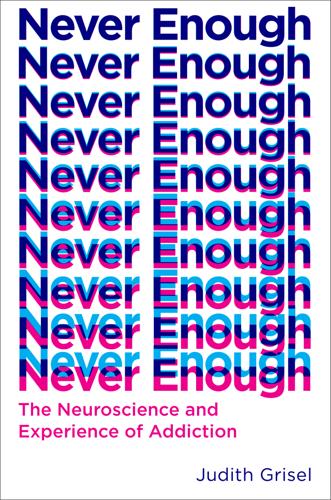
Never Enough: The Neuroscience and Experience of Addiction
by
Judith Grisel
Published 15 Feb 2019
Some of these are respiratory depression (responsible for death by overdose), constipation (making it a useful treatment for severe diarrhea), and euphoria (an antidote, we might say, to dysphoria, another seemingly unavoidable aspect of the human condition). And, of course, it’s this latter effect that gives the drug its addictive liability. From a neuroscience perspective, the appeal of opiate drugs is easy to understand. The large class of narcotics, from heroin, fentanyl, and oxycodone to their less potent analogs like tramadol and codeine, all work by mimicking endorphins (endogenous morphine-like substances), the body’s natural painkillers. It turns out that our brains manufacture an incredibly rich and varied pharmacopoeia of these natural opioids, the sheer number and wide distribution of which suggest that they play a critical role in our survival.
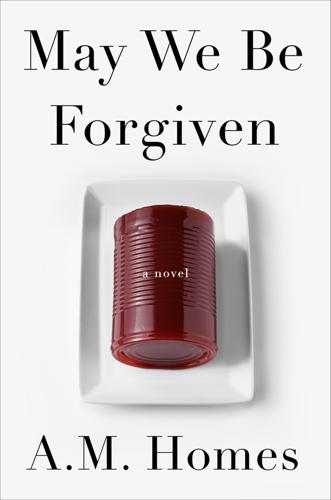
May We Be Forgiven
by
A. M. Homes
Published 14 Jun 2012
“When I’m back at school you won’t be following me into the bathroom. There has to be a measure of trust. Just let me pee.” “You’re right, but the minute you blow it, you are so fucked,” I say, opening the medicine cabinet. “His Prilosec, her birth control, her Prozac; acyclovir—that’s nice, they must have herpes—oxycodone for his back.” “Oxycodone would be okay,” Nate says. “Oxy is nice.” “Here, take this,” I say, plucking out a pink-and-white capsule and handing it to him. “What is it?” “Benadryl.” “That’s not even prescription.” “That doesn’t mean it doesn’t work; it’s very sedating.” “What else is there? Diazepam, that’s generic Valium—let me have two of those.”
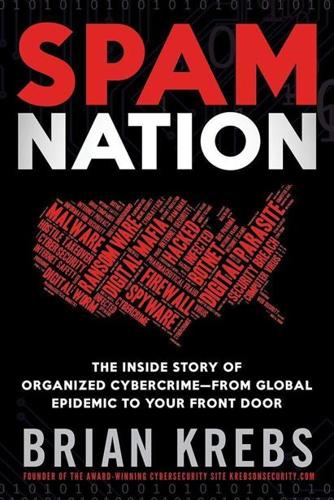
Spam Nation: The Inside Story of Organized Cybercrime-From Global Epidemic to Your Front Door
by
Brian Krebs
Published 18 Nov 2014
In effect, these people were self-prescribing and didn’t see the need to pay for a doctor visit or to submit to the higher prices charged by their local pharmacies. •Recreation or Dependence: Buyers in this category purchased mainly drugs whose use and sale have been restricted in the United States, usually because the drugs have the potential for abuse. These were primarily painkillers such as generic oxycodone, hydrocodone, and tramadol; weight-loss drugs like phentermine (a powerful stimulant); and sleeping pills like Soma and Lunesta. Perhaps because of the addictiveness of some of these drugs, this class of buyers tended to be the most loyal, profitable repeat customers. Price SpamIt customers were motivated to purchase drugs from spam for a variety of reasons, but the number one reason I heard was affordability—particularly among customers who were purchasing medications taken to treat chronic conditions.
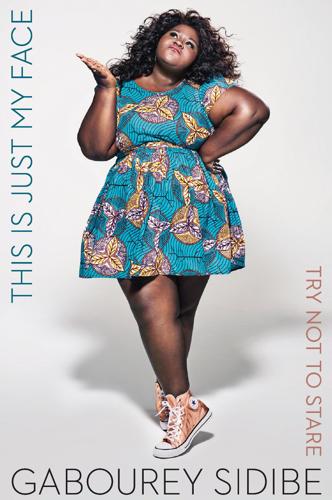
This Is Just My Face: Try Not to Stare
by
Gabourey Sidibe
Published 14 Apr 2017
You recognize me?” Two days later she picked me up and we went back to our rental house. I had three days’ worth of texts and work e-mails and requirements from people who had no idea that I had just had surgery. I was tired. My stomach was trembling and sending waves of pain through my entire body. I had oxycodone for the pain, but it made me sleepy and spaced-out. The first few nights, I would wake up at 4:20 a.m. on the dot. I’d have to get up and take the oxy just to get back to sleep. Kia made me sleep with my door open, and every time she heard me shuffling, she’d scream, “You OKAY?! You takin’ drugs?!”
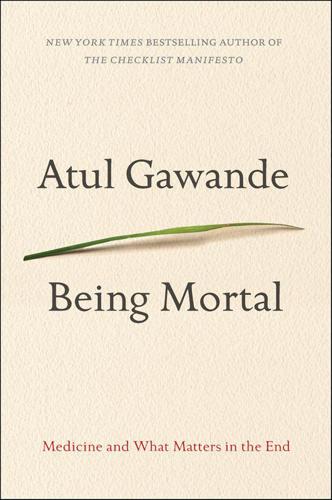
Being Mortal: Medicine and What Matters in the End
by
Atul Gawande
Published 6 Oct 2014
At first, her goal was just managing her daily difficulties. The hospice team set up a hospital bed on the first floor so she wouldn’t have to navigate the stairs. They put a portable commode at the bedside. They organized help for bathing and getting dressed. They gave her morphine, gabapentin, and oxycodone to control her pain, and methylphenidate proved helpful for combating the stupor they induced. Her anxieties plummeted as the challenges came under control. She raised her sights. “She was focused on the main chance,” Martin later said. “She came to a clear view of how she wanted to live the rest of her days.
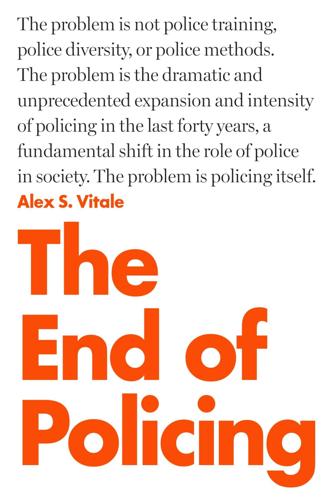
The End of Policing
by
Alex S. Vitale
Published 9 Oct 2017
The book and movie Prince of the City detail the corruption of narcotics detectives in New York who traffic in drugs to get information from informants, take bribes, and steal money and drugs from dealers.17 Similar practices were uncovered in the late 1990s by the Mollen Commission and its investigation of the “Dirty Thirty” precinct in Harlem.18 More recently, drug scandals have emerged in numerous police agencies, including the DEA. For example, in March 2015 alone: •The Fresno (California) Police Department’s second in command was arrested by FBI and ATF agents for dealing oxycodone, marijuana, and heroin.19 •In Scott County, Tennessee, a deputy sheriff was arrested for burglarizing drugs from the police evidence room.20 •An NYPD officer was arrested in Florida after he was caught in a drug sting attempting to buy $200,000 worth of cocaine.21 •A Miami-Dade police lieutenant pled guilty to aiding cocaine smugglers and planning the execution of rival dealers.22 •A Winston County, Alabama, deputy was sentenced to more than three years in prison for extorting a local woman into cooking methamphetamine for him to distribute.23 •An FBI agent who spent years working on drug enforcement pled guilty to sixty-four counts of stealing heroin from evidence bags for his own use.24 •A police officer from Titusville, Florida, was sentenced to ten years in prison for dealing cocaine.25 •The DEA released a report detailing how agents assigned to Colombia had for years been having sex parties paid for by local drug cartels.26 The arrest of officers is so common that the organization StoptheDrugWar.com publishes weekly reports of police arrested on drug charges.27 Racial Impacts Racialized patterns of enforcement are at the core of a great deal of drug war policing.

AIQ: How People and Machines Are Smarter Together
by
Nick Polson
and
James Scott
Published 14 May 2018
Another team of inspectors used the same techniques to search for stores selling alcohol and tobacco illegally, and they also improved their hit rate: from 30% to 82%. Yet a third team managed to put a dent in opioid abuse, using Medicaid claims data to identify a small set of pharmacies—about 1% overall—that accounted for 60% of the city’s Oxycodone prescriptions.20 And that’s just the inspectors. Imagine the potential for similar improvements as other city agencies start to collect and monitor new kinds of data—from the police to the pothole fillers, from the parks department to the fire brigade. Imagine, for example, how many lives might be saved if you could identify not just where and when but why people tend to get hit by cars frequently.
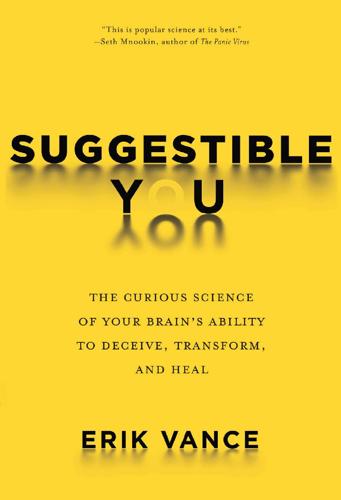
Suggestible You: The Curious Science of Your Brain's Ability to Deceive, Transform, and Heal
by
Erik Vance
Published 14 Sep 2016
Naloxone—the drug that first helped expose the chemical nature of placebos and that blocks placebo responses altogether—wasn’t invented for placebo research. Today, it serves a crucial role in medicine as an emergency treatment for drug overdoses. Just as it blocks the effects of our internal pharmacy, it’s also pretty effective at blocking the effects of, say, heroin or oxycodone. And a closely related drug, naltrexone, is one of the most effective ways to treat alcohol abuse. Hard to believe? Next time your favorite drinking buddy comes over, serve him a nonalcoholic beer in a bottle for alcoholic beer. Make it three. Can you guess what happens next? Multiple studies have shown that people who think they’re drinking booze but are actually drinking a nonalcoholic brew feel just as drunk as those drinking the real stuff—at least for a couple drinks.
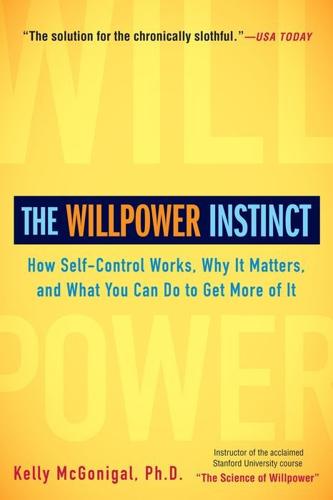
The Willpower Instinct: How Self-Control Works, Why It Matters, and What You Can Doto Get More of It
by
Kelly McGonigal
Published 1 Dec 2011
All that changed the day he was taken from a party to the emergency room, where he promptly ingested all the drugs in his possession to avoid being caught with illegal substances (not a smart move, but to be fair, he wasn’t in the clearest state of mind). The dangerous drug combination of cocaine, Ecstasy, oxycodone, and methadone led to a near-fatal drop in blood pressure and reduced oxygen to his brain. Although he was resuscitated and eventually released from intensive care, the temporary oxygen deprivation would prove to have profound consequences. Adam lost all of his cravings for drugs and alcohol. His daily drug use dropped to complete abstinence, confirmed by drug tests over the following six months.
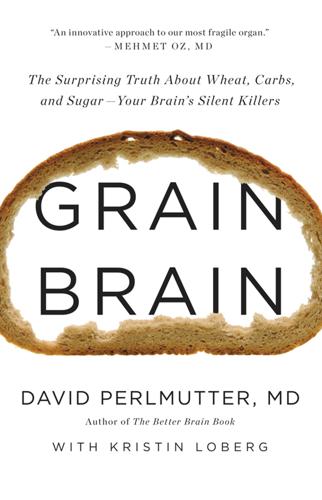
Grain Brain: The Surprising Truth About Wheat, Carbs, and Sugar--Your Brain's Silent Killers
by
David Perlmutter
and
Kristin Loberg
Published 17 Sep 2013
Christine Zioudrou and her colleagues at the National Institutes of Health, named these brain-busting polypeptides exorphins, which is short for exogenous morphine-like compounds, distinguishing them from endorphins, the body’s naturally produced painkillers.19 What’s most interesting about these exorphins, and further confirms their impact on the brain, is that we know they can be stopped by opiate-blocking drugs like naloxone and naltrexone—the same drugs used to reverse the action of opiate drugs such as heroine, morphine, and oxycodone. Dr. William Davis describes this phenomenon well in his book Wheat Belly: “So this is your brain on wheat: Digestion yields morphine-like compounds that bind to the brain’s opiate receptors. It induces a form of reward, a mild euphoria. When the effect is blocked or no exorphin-yielding foods are consumed, some people experience a distinctly unpleasant withdrawal.”20 Given what I just explained, is it any wonder that food manufacturers try to pack as much gluten into their products as possible?
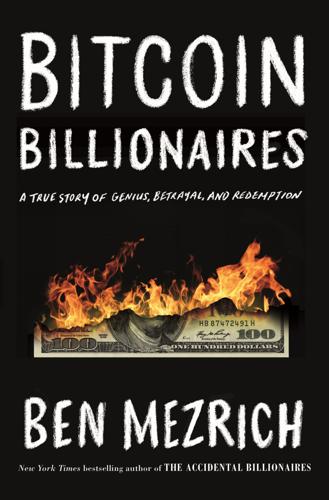
Bitcoin Billionaires: A True Story of Genius, Betrayal, and Redemption
by
Ben Mezrich
Published 20 May 2019
Although Ulbricht could argue that by running a website, he was merely a software provider, which didn’t make him responsible for what was sold on that site—Amazon, eBay, and plenty of other sites had seen illegal items sold on them many times over—it would be, in the end, a hard argument to win in front of a jury. For one thing, it was unlikely that any jury did not include at least one person who cared for or knew someone whose life was ravaged by an opioid addiction. Pills like oxycodone seamlessly changed hands in bulk over Silk Road every day. Dread Pirate Roberts knew exactly what his marketplace was selling and had continually argued in his own writings that he was proud of the niche Silk Road filled. In fact, he wasn’t just the site’s operator, if the feds were to be believed, but he had also tried to hire hit men over the site—he was one of its customers.
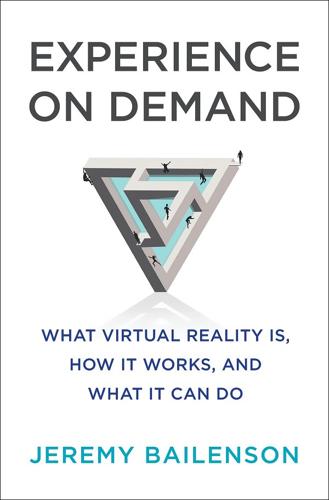
Experience on Demand: What Virtual Reality Is, How It Works, and What It Can Do
by
Jeremy Bailenson
Published 30 Jan 2018
Either way, the grueling experience of dealing with constant pain carries over into every aspect of an individual’s life, affecting everything from sleep, work productivity, and personal relationships to the patient’s own mental health, and contributing to a negative feedback loop that can lead to severe depression.2 One way doctors have sought to treat those suffering from acute and chronic pain is to administer powerful prescription opioid painkillers like oxycodone and hydrocodone. Indeed, my doctor and I discussed this possibility before we decided to see first how I responded to physical therapy. He was no doubt wary due to a growing awareness in the medical community that opioid painkillers—as effective and necessary as they sometimes are—have been overprescribed in recent decades, and with grave unintended consequences.
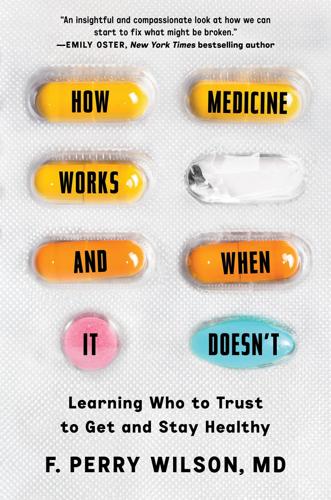
How Medicine Works and When It Doesn't: Learning Who to Trust to Get and Stay Healthy
by
F. Perry Wilson
Published 24 Jan 2023
It is why we have difficulty sticking with an exercise routine, or changing our diet, or studying for the SAT—the benefits of these actions are not immediately evident. It is also the reason we are so much more comfortable taking medications that address immediate symptoms (think ibuprofen for that headache or, more extreme, oxycodone for that back pain) compared to medications that are needed for some longer-term benefit (like cholesterol drugs to prevent a distant heart attack). My heuristic from the start of the chapter (A causes B if changing A changes B) is good but not always practical to test—particularly when outcomes are very distant in time from exposures or when A can’t be easily changed.
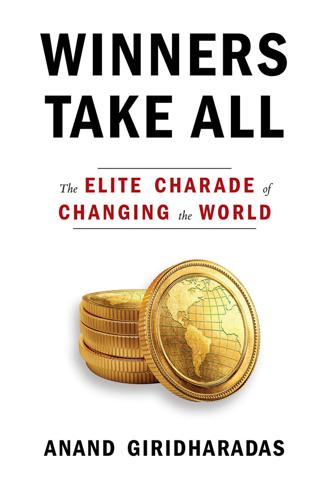
Winners Take All: The Elite Charade of Changing the World
by
Anand Giridharadas
Published 27 Aug 2018
In 2001, as sales of OxyContin and other opioids soared, officials at the state employee health plan in West Virginia noticed something strange. As the insurer for state employees, it received paperwork when they died, including the coroner’s account of the cause of death. Officials at the insurer took note of a rising number of deaths attributed to something called oxycodone, the active ingredient in OxyContin, according to STAT. The officials were familiar with the drug, because prescriptions for it were exploding among their clients, who ingested $11,000 worth of it in 1996 and $2 million worth in 2002. The officials were quick to speak up. They pushed for regulations that would require doctors to secure prior authorization before prescribing OxyContin, which was intended to confine usage of the drug to people who genuinely needed it and to keep it away from known addicts and others with a record of abusing it.
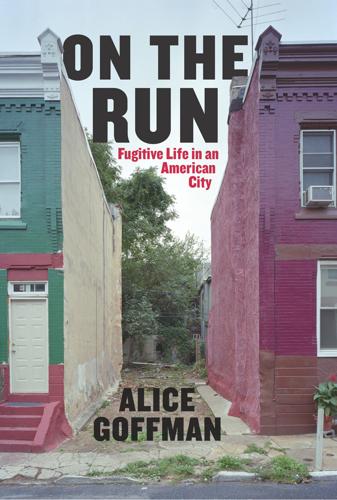
On the Run: Fugitive Life in an American City
by
Alice Goffman
Published 30 Apr 2014
Twice I accompanied Miss Linda to meet a guard whom she paid to smuggle in marijuana to one of her sons sitting in county jail. Another time I accompanied Mike’s girlfriend to a meeting with a prison guard who accepted a blow job and thirty-five dollars in exchange for smuggling in three pills of oxycodone to Mike, which he took to ease the pain from a severe beating received in the yard. In 2011, I learned that Miss Linda had been paying a guard to smuggle Percocet to her son Reggie in the prison yard. He had been sitting in state prison for six months on a parole violation, this time for driving a car without a license.
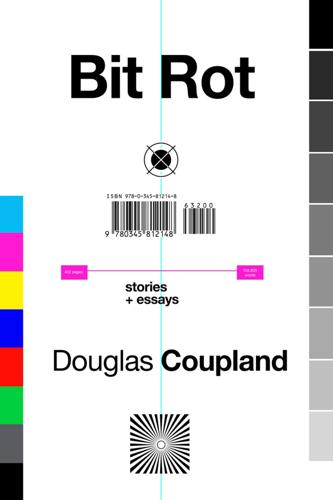
Bit Rot
by
Douglas Coupland
Published 4 Oct 2016
If you buy a one-in-fifty-million chance to win a cash jackpot, you’re simultaneously tempting fate and adding all sorts of other bonus probabilities to your plane of existence: car crashes, random shootings, being struck by a meteorite. Why open a door that didn’t need opening? Gambling is apparently the hardest of all addictions to shake. When you quit smoking or oxycodone, you know you’ve stopped, but former gamblers are still always gambling in their minds, even if they’re not at the racetrack, or buying lotto tickets, or playing the stock market online in the family den. I like Las Vegas but I don’t get the gambling part of it. Let me see: I have two hundred dollars, which I then incrementally set fire to over the course of an hour or so.
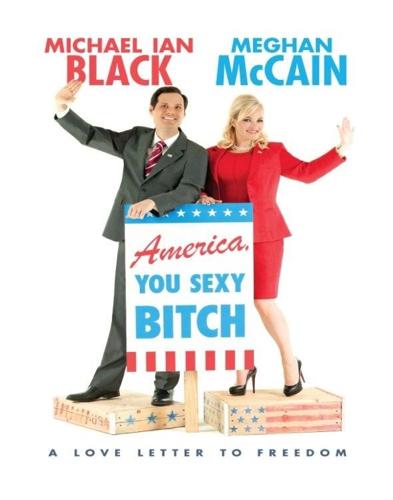
America, You Sexy Bitch: A Love Letter to Freedom
by
Meghan McCain
and
Michael Black
Published 31 May 2012
Yet we persist in our absurd “war on drugs” as if it’s doing anything productive other than making a bunch of Mexican drug lords obscenely wealthy and a lot of other people dead. The fact is this: people want to get high. They have always gotten high and will continue to get high. They do it with legal means and they do it with illegal means and it’s very hard to reconcile where the line is drawn. Why is pot more dangerous than booze? Why is heroin worse than oxycodone? Why is the government in the business of telling people what they can and cannot voluntarily put into their bodies? It’s a game they cannot win. Telling people not to get high doesn’t work. Imprisoning them for getting high doesn’t work. Nothing works. Because people want to get high. The war on drugs as we know it commenced in 1973, under the direction of President Nixon.

Deep Medicine: How Artificial Intelligence Can Make Healthcare Human Again
by
Eric Topol
Published 1 Jan 2019
After surgery I underwent the standard—and, as far as I was told, only—physical therapy protocol, which began the second day after surgery. The protocol is intense, calling for aggressive bending and extension to avoid scar formation in the joint. Unable to get meaningful flexion, I put a stationary bicycle seat up high and had to scream in agony to get through the first few pedal revolutions. The pain was well beyond the reach of oxycodone. A month later, the knee was purple, very swollen, profoundly stiff, and unbending. It hurt so bad that I couldn’t sleep more than an hour at a time, and I had frequent crying spells. Those were why my orthopedist recommended antidepressants. That seemed crazy enough. But the surgeon then recommended a more intensive protocol of physical therapy, despite the fact that each session was making me worse.
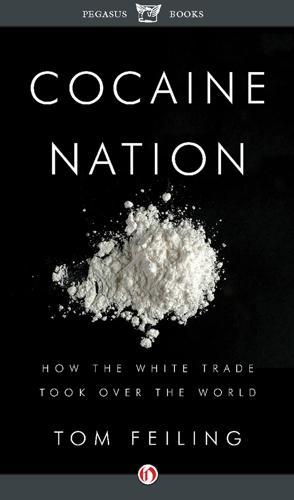
Cocaine Nation: How the White Trade Took Over the World
by
Thomas Feiling
Published 20 Jul 2010
Some teenagers find ways of getting their hands on alcoholic drinks, but a survey of American teenagers conducted in 1996 found that 42 per cent of them find marijuana easier to buy than either beer or cigarettes.40 The distinction between legal and illegal drugs is arbitrary and increasingly hard to maintain. Its main purpose seems to be to support a façade of nominal abstention behind which the United States dopes itself up to its collective eyeballs. The actor Heath Ledger died in New York City on 22 January 2008 of acute intoxication by the combined effects of oxycodone, hydrocodone, diazepam, temazepam, alprazolam and doxylamine. Commercial names for these legal drugs include the anti-anxiety medications Valium and Xanax, the painkillers OxyContin and Hydrocodone, and the sleeping aids Restoril and Unisom.41 The abuse of legal sedatives is not a crime, and perhaps as a result the press treated the death of Heath Ledger as a tragedy brought on by anxiety and insomnia.
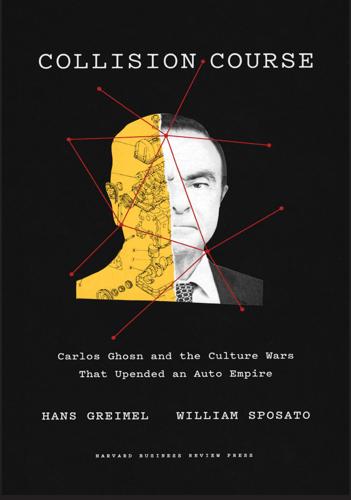
Collision Course: Carlos Ghosn and the Culture Wars That Upended an Auto Empire
by
Hans Gremeil
and
William Sposato
Published 15 Dec 2021
Another brush with Japanese law saw a Toyota auto executive make a hasty exit from the country. Julie Hamp, a US executive for the carmaker, was promoted to head global PR in 2015. Her troubles began soon after her arrival in Tokyo when a box of personal effects she had shipped from the United States was found to contain the opioid painkiller oxycodone, which is tightly controlled in Japan. Unlike others in similar circumstances, Hamp was never charged for what was called a minor infringement.12 But that was not before she spent three weeks in custody. In the end, she lost her job (the company said she resigned) and went back to the United States.
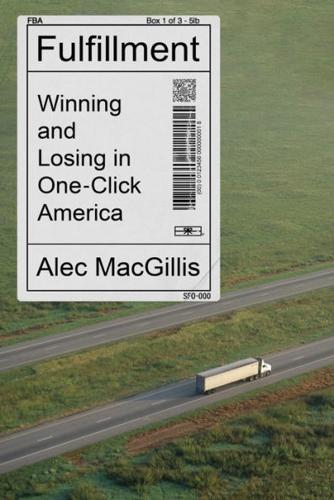
Fulfillment: Winning and Losing in One-Click America
by
Alec MacGillis
Published 16 Mar 2021
The results showed traces of a dozen medications and substances, among them nicotine; bupropion, which is marketed as both an antidepressant and a smoking deterrent; Delta-9-THC, the main active ingredient of marijuana; Benadryl; gabapentin, an antiepileptic drug also used to treat nerve pain; hydrocodone, which is found in opioids such as Vicodin and Zohydro; morphine, which commonly derives from codeine or heroin; oxazepam, a benzodiazepine prescribed for anxiety; and oxycodone, which is found in opioids such as OxyContin. She also had a low level of blood alcohol concentration, .02. On November 14, Kevin Kilp sent a letter to Diana Williams saying that OSHA’s inspections of the Carlisle warehouse had revealed “potential hazards” involving PIT operations, notably the under-ride risk associated with the vehicles.
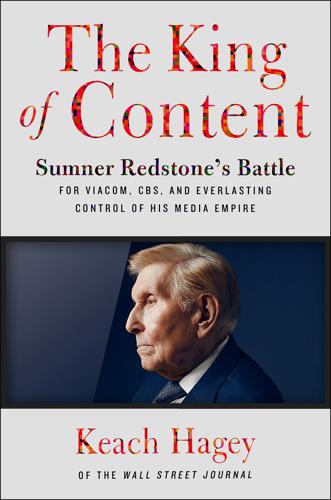
The King of Content: Sumner Redstone's Battle for Viacom, CBS, and Everlasting Control of His Media Empire
by
Keach Hagey
Published 25 Jun 2018
It is unfortunate that this is how Michael has chosen to repay Sumner Redstone’s care and generosity.” Painting Michael as crazy while also bragging about having employed him was a delicate balance, but people who knew Michael say he continued to have profound emotional problems until his death, alone, at age fifty-six, from what the coroner ruled a toxic combination of fentanyl, oxycodone, and temazepam.30 “He was a recluse,” said one person who knew him at the time of the case. But he had inherited the intelligence, as well as some of the resilience, that ran in the Redstone family, and he managed to piece together a surprisingly normal adult life. He earned his GED while still at the Menninger Clinic in Topeka, then returned to Boston to enter Northeastern University, where he earned a bachelor’s degree in public administration.
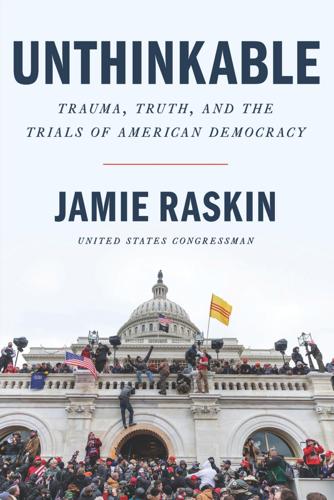
Unthinkable: Trauma, Truth, and the Trials of American Democracy
by
Jamie Raskin
Published 4 Jan 2022
I have never had depression before, but when I had colon cancer, I did have to think, quite a bit, about life. I did it all: chemo, radiation, and surgery twice, including one procedure that required Dr. Jonathan Efron and his team at the Johns Hopkins colorectal surgery unit to work on me for more than ten hours and which left me horizontal and immobile for six weeks and floating in an oxycodone fog for five months. Never once do I remember wanting to die. I remember Hannah leaving for Amherst and my not being able to go with Sarah to drive her there and help her unpack, and both Hannah and me crying as she left, knowing so little of what the future held for my darling daughter or for me.
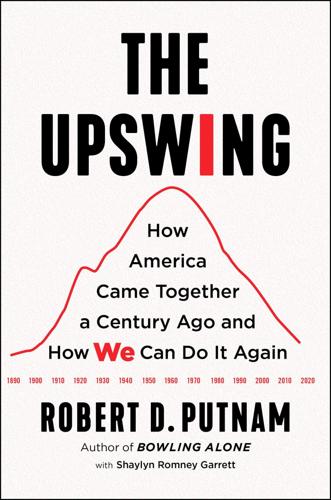
The Upswing: How America Came Together a Century Ago and How We Can Do It Again
by
Robert D. Putnam
Published 12 Oct 2020
Although the “deaths of despair” narrative largely focuses on poor, middle-aged whites without college degrees, suicide among all racial and ethnic groups and for men and women has gone up since 1999. The CDC report on the rural-urban differences in drug overdose rate demonstrates how opioids such as oxycodone are abused at higher rates in rural counties, although synthetic opioids, such as fentanyl, cause more deaths in urban counties. See Holly Hedegaard, Arialdi M. Miniño, and Margaret Warner, “Urban–Rural Differences in Drug Overdose Death Rates, by Sex, Age, and Type of Drugs Involved, 2017,” NCHS Data Brief No. 345, August 2019 (Hyattsville, MD: National Center for Health Statistics, 2019), https://www.cdc.gov/nchs/products/databriefs/db345.htm. 15 Mark Strauss, “Four-in-Ten Americans Credit Technology with Improving Life Most in the Past 50 Years,” Fact Tank—News in the Numbers (blog), October 12, 2017, https://www.pewresearch.org/fact-tank/2017/10/12/four-in-ten-americans-credit-technology-with-improving-life-most-in-the-past-50-years/. 16 Before Emancipation very few blacks had any formal schooling.
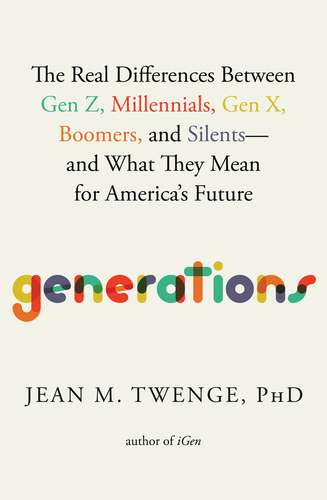
Generations: The Real Differences Between Gen Z, Millennials, Gen X, Boomers, and Silents—and What They Mean for America's Future
by
Jean M. Twenge
Published 25 Apr 2023
While young adults were once slightly more likely to overdose than older adults, older adults 55–64 were more likely to overdose starting in 2007, with the gap widening by 2020 (see Figure 3.37). The CDC database doesn’t specify which drugs caused the overdoses, but it’s a good bet many of these deaths are due to opioids (such as oxycodone). Overdoses spiked in both age groups in 2020, perhaps due to the COVID pandemic or other factors. Figure 3.36: Death rates among U.S. 55- to 64-year-olds, by cause of death and generation/year Source: National Vital Statistics System, accessed via WONDER database, CDC Notes: Death rates are out of 100,000 population. 55- to 64-year-olds were born 1936–1945 (all Silent birth years) in 2000, and 1955–1964 (all Boomer birth years) in 2019.

Future Crimes: Everything Is Connected, Everyone Is Vulnerable and What We Can Do About It
by
Marc Goodman
Published 24 Feb 2015
Just as Microsoft took the personal PC away from IBM, and Apple took the mobile phone from Nokia and BlackBerry, it may be a student at MIT who obviates the need for a Colombia-based Pablo Escobar of tomorrow. Moreover, if Craig Venter is right and we will all have bio-printers at home, why not just print my own THC or oxycodone—evaporating billions in profits from legacy players and creating new leaders in the bio-cartels of tomorrow. Hacking the Software of Life: Bio-crime and Bioterrorism In the nearer term, I think various developments in synthetic biology are quite disconcerting. We are gaining the ability to create designer pathogens, and there are these blueprints of various disease organisms that are in the public domain—you can download the gene sequence for smallpox or the 1918 flu virus from the Internet.

Enlightenment Now: The Case for Reason, Science, Humanism, and Progress
by
Steven Pinker
Published 13 Feb 2018
So the single rising curve in figure 12-6 is not a counterexample to humanity’s progress in reducing environmental hazards, though it certainly is a step backward with respect to a different kind of hazard, drug abuse. The curve begins to rise in the psychedelic 1960s, jerks up again during the crack cocaine epidemic of the 1980s, and blasts off during the far graver epidemic of opioid addiction in the 21st century. Starting in the 1990s, doctors overprescribed synthetic opioid painkillers like oxycodone, hydrocodone, and fentanyl, which are not just addictive but gateway drugs to heroin. Overdoses of both the legal and illegal opioids have become a major menace, killing more than 40,000 a year and lifting “poison” into the largest category of accidental death, exceeding even traffic accidents.54 Drug overdoses clearly are a different kind of phenomenon from car crashes, falls, fires, drownings, and gassings.

Wanderers: A Novel
by
Chuck Wendig
Published 1 Jul 2019
A breathing tube was stuck up her nose, and a feeding tube into her mouth. Doctor Gestern spoke, explaining to Matthew what had happened, best as he could tell. Matthew heard the words, but almost as if they were separate from him, radiating all around him, a wobbling, wavy echo. She appeared to overdose, Pastor Bird… Oxycodone and Xanax are a real bad combination… Problem is, people start to build up a tolerance quick, so they might take more of them as they go along to fix whatever pain they’re enduring… She’s presently in a coma, Pastor, I can’t say what that means, but her vitals are steady, and fingers are crossed there’s no brain damage… No, I can’t rightly say where she got them, they’re not prescriptions, and that’s the problem with drugs like these, you don’t know where they came from, what’s in ’em, in what concentration… But Matthew knew where they came from.

The Price of Silence: The Duke Lacrosse Scandal
by
William D. Cohan
Published 8 Apr 2014
Whether Mangum had danced at Platinum Pleasures after March 13 seemed as much a mystery as ever. Two days later, Mangum returned to UNC Hospitals, complaining of “knee pain, neck pain, and vaginal bleeding.” Mangum told the doctors that she “continued to have muscle spasms” in her neck and back and continued to use Flexeril and oxycodone, “which helped.” As for her knee pain, Mangum told the doctors that “when she was assaulted,” she fell and felt “a sharp pain when she hit her knee,” and that it was now “popping out” and “locking” when she climbed stairs. “She has not had this pain before,” the doctors noted. They also wrote that Mangum had “vaginal bleeding on and off for the last two weeks.”